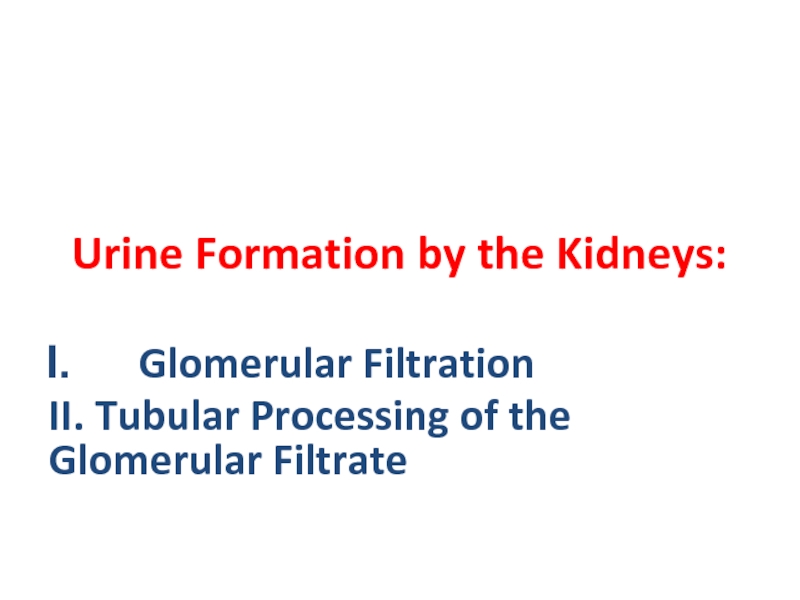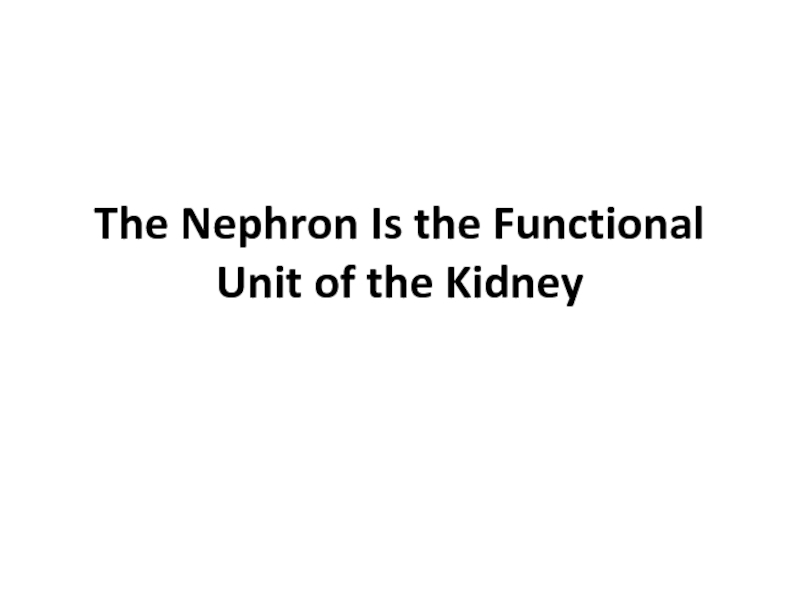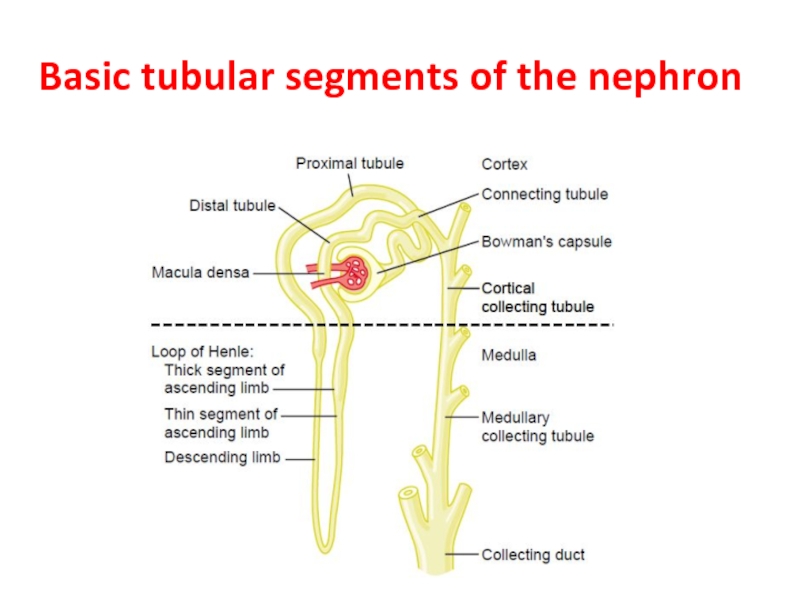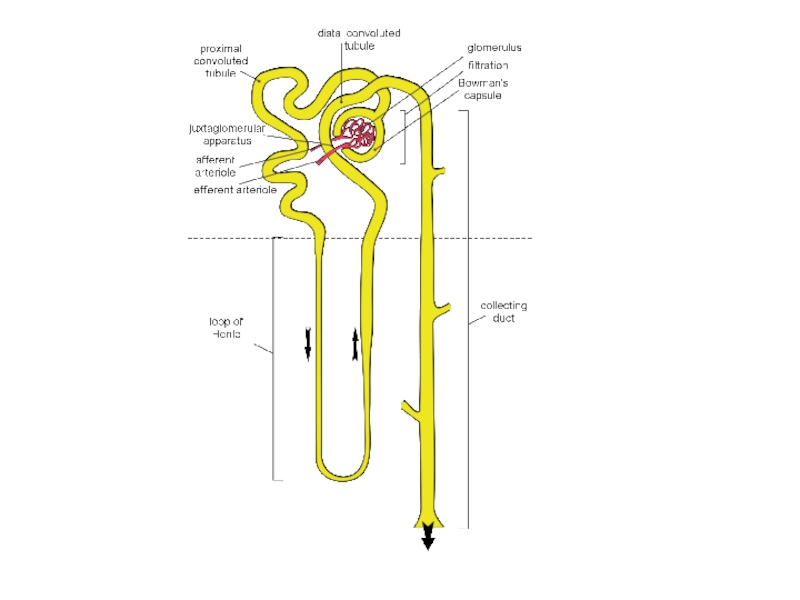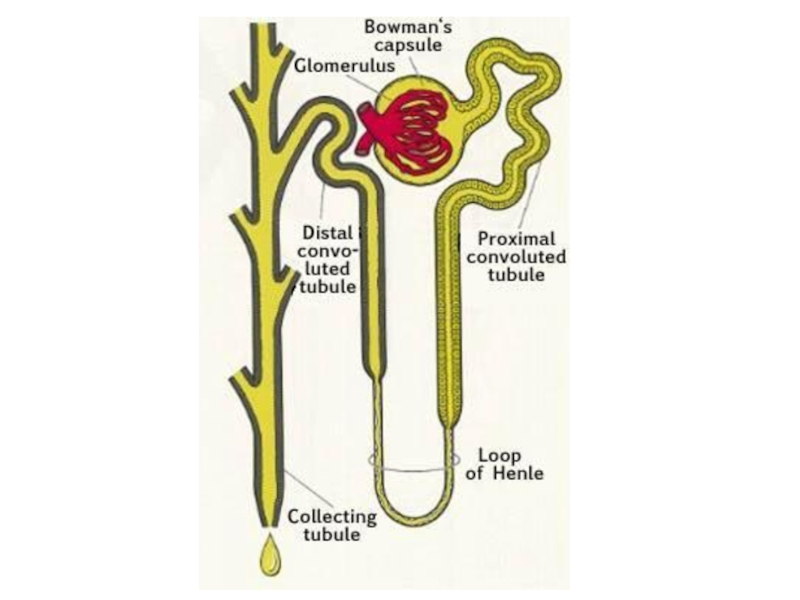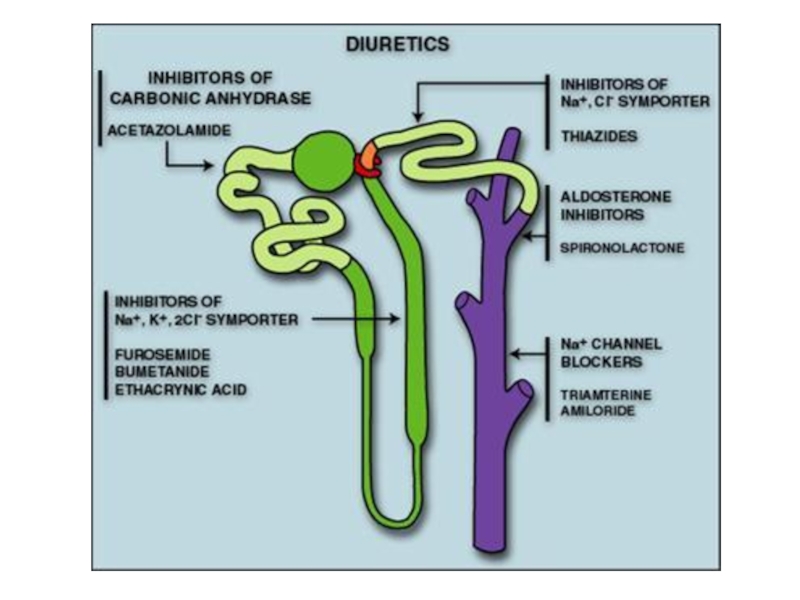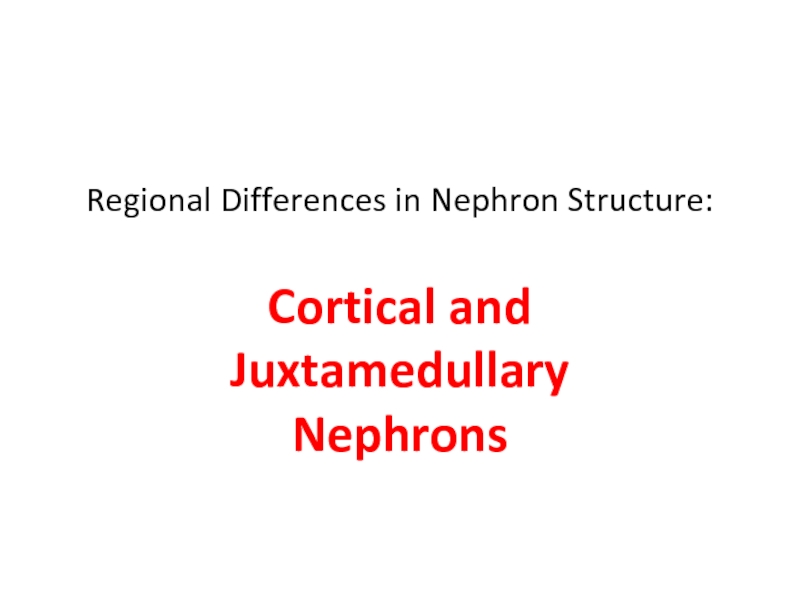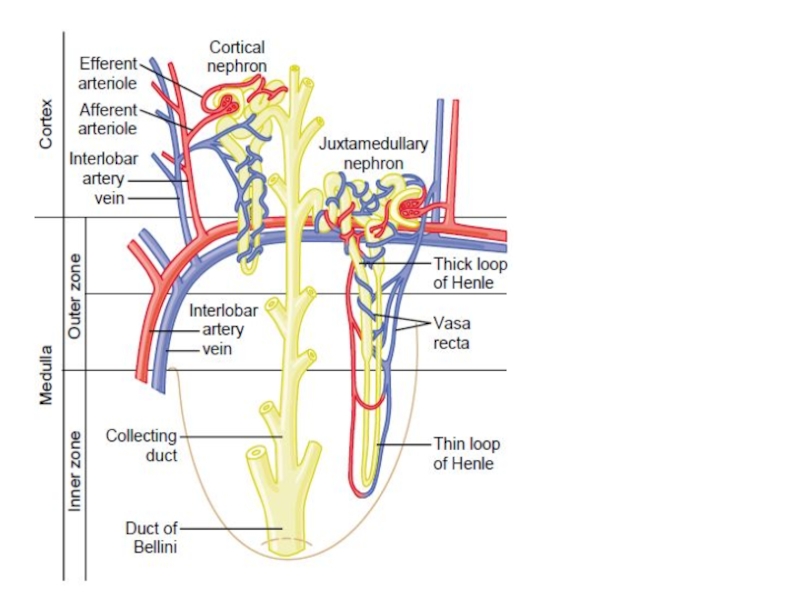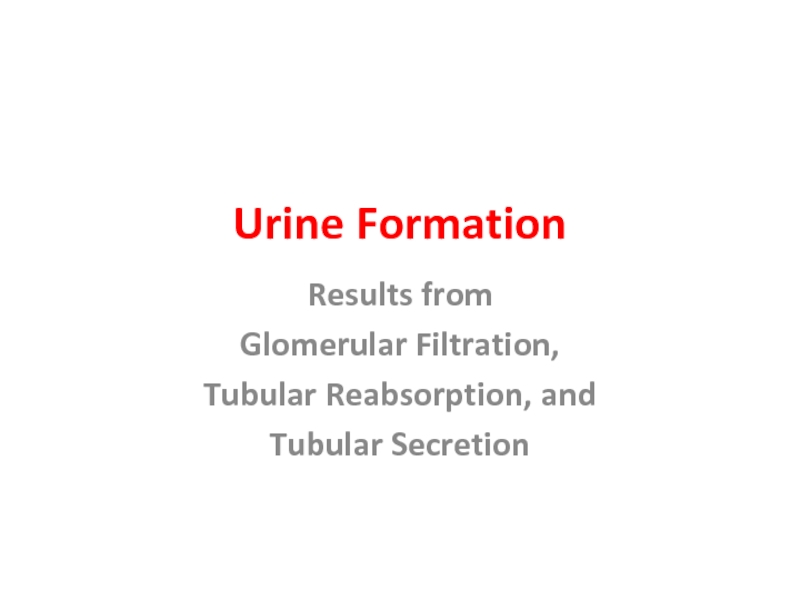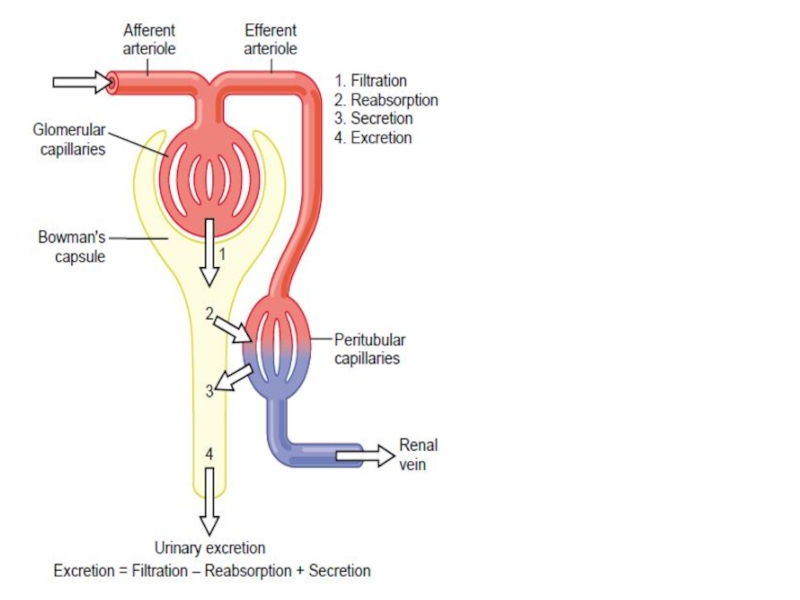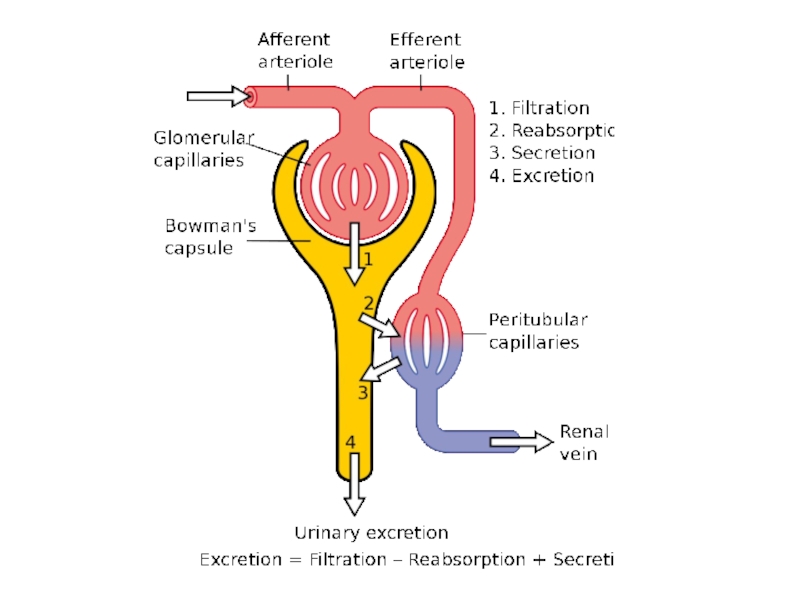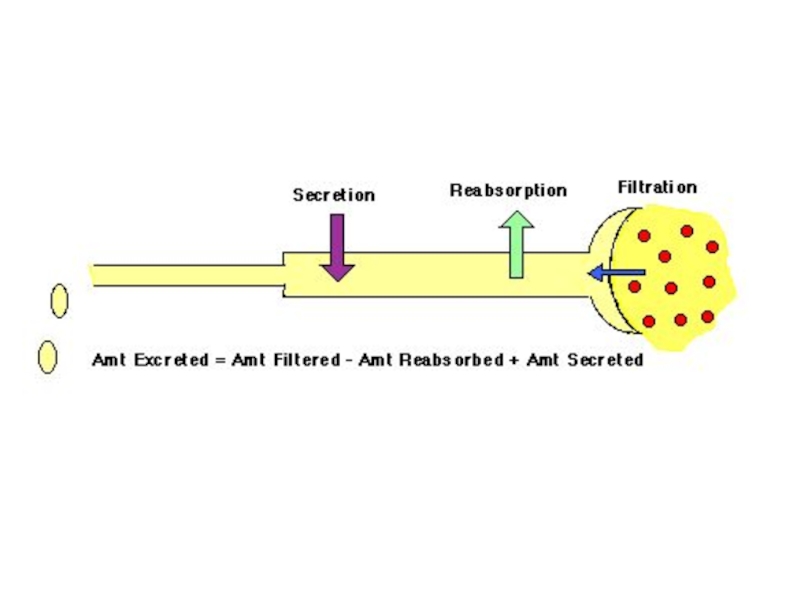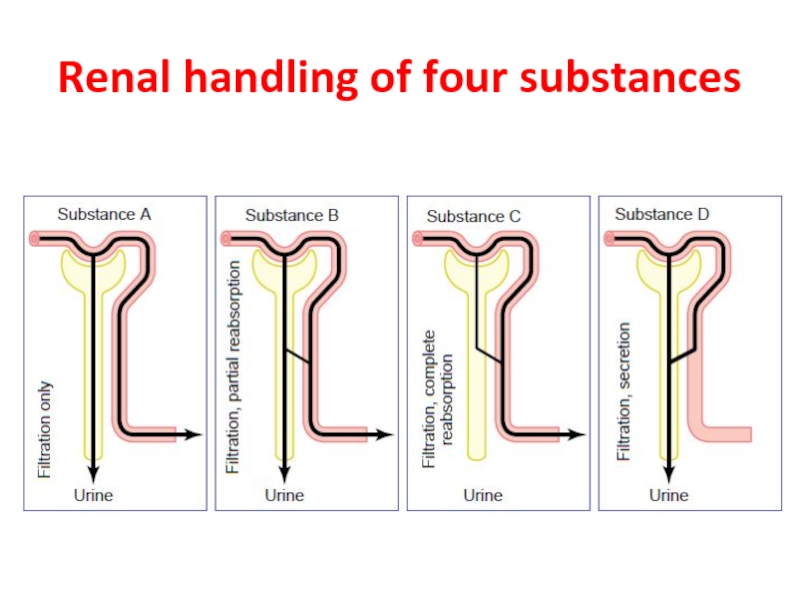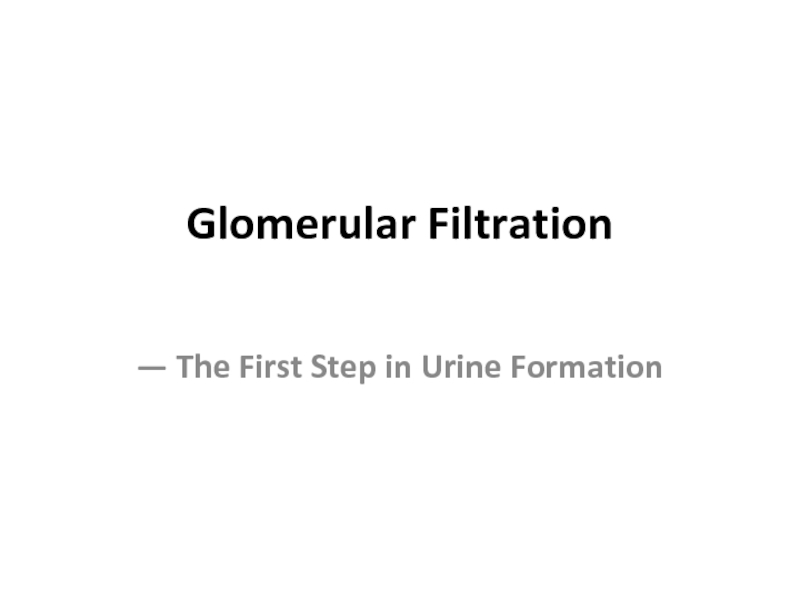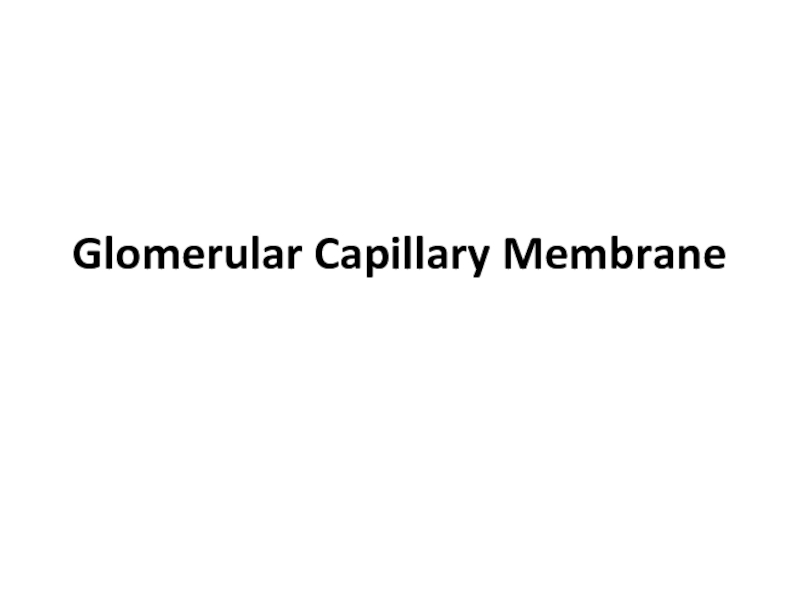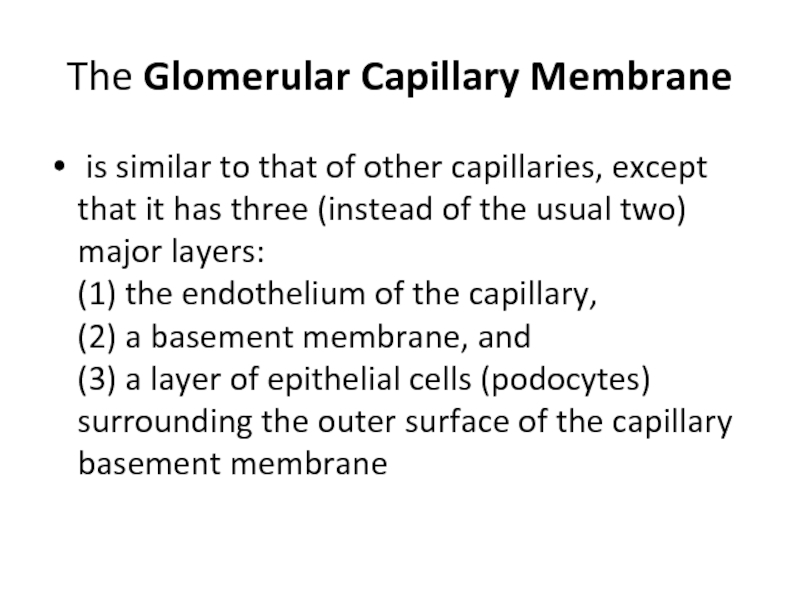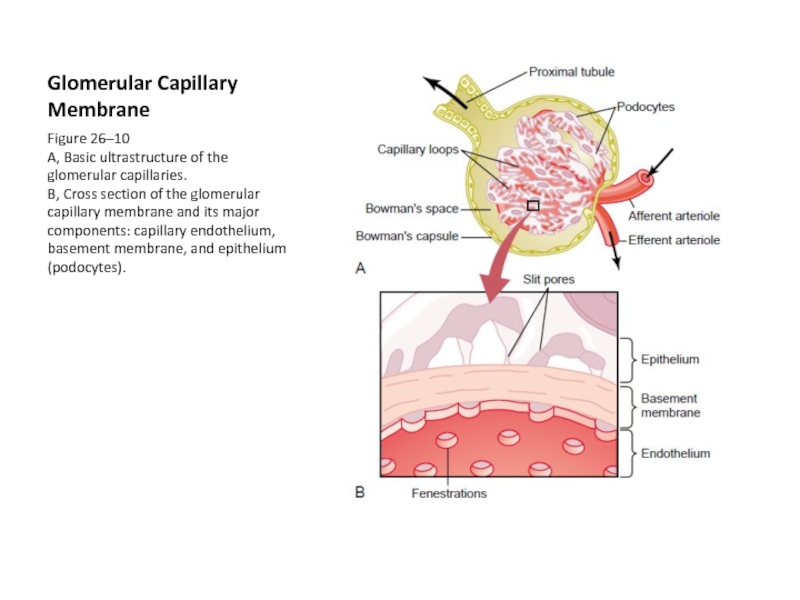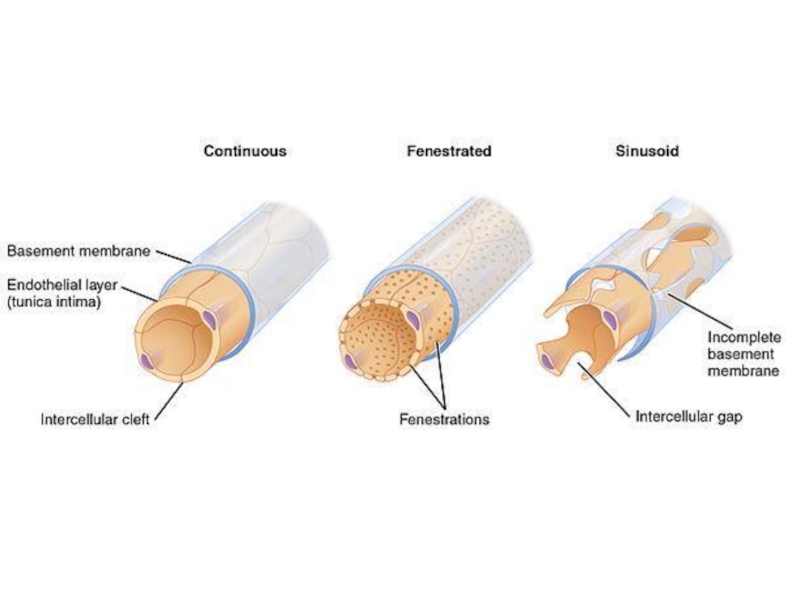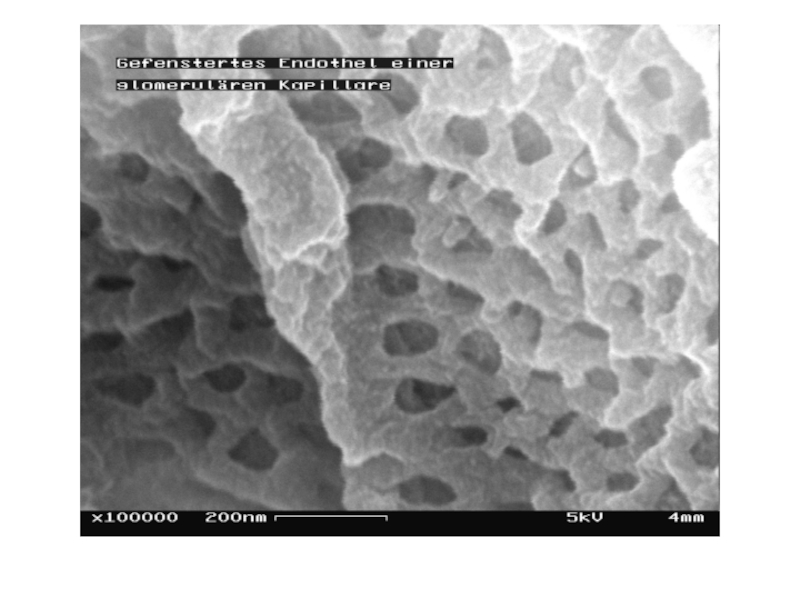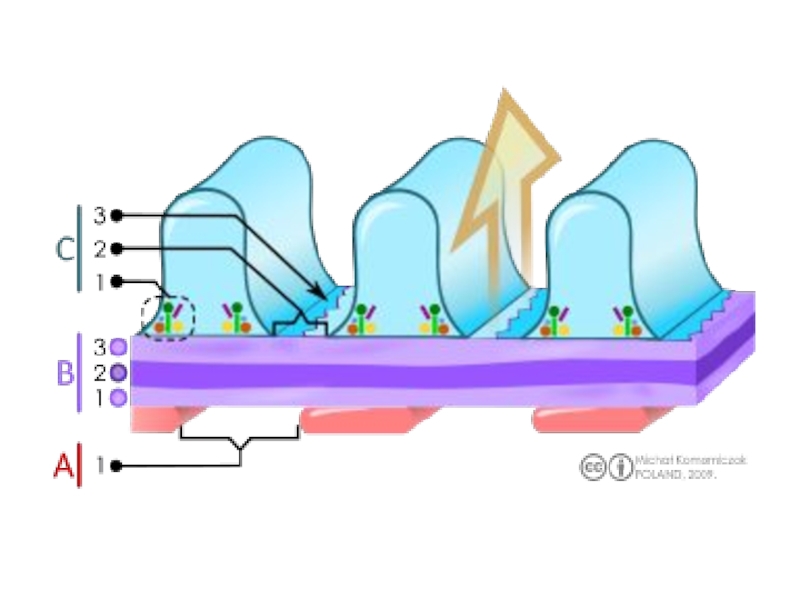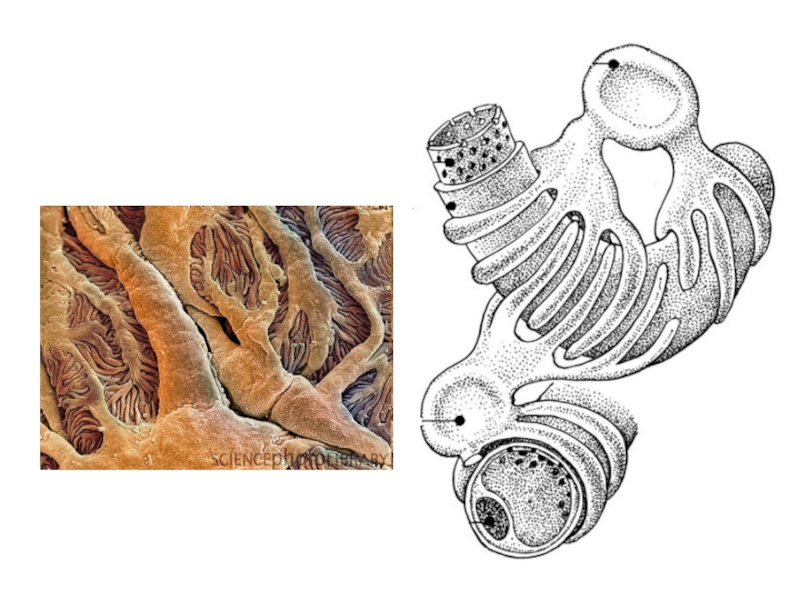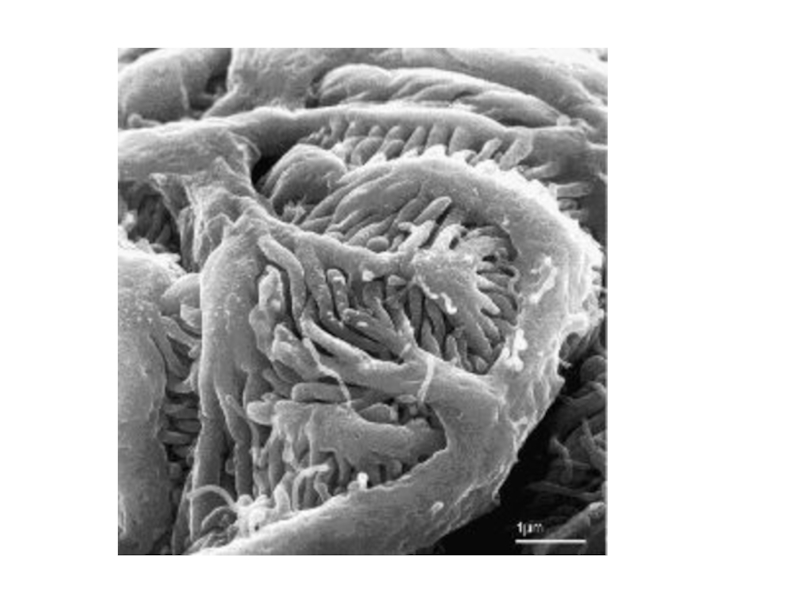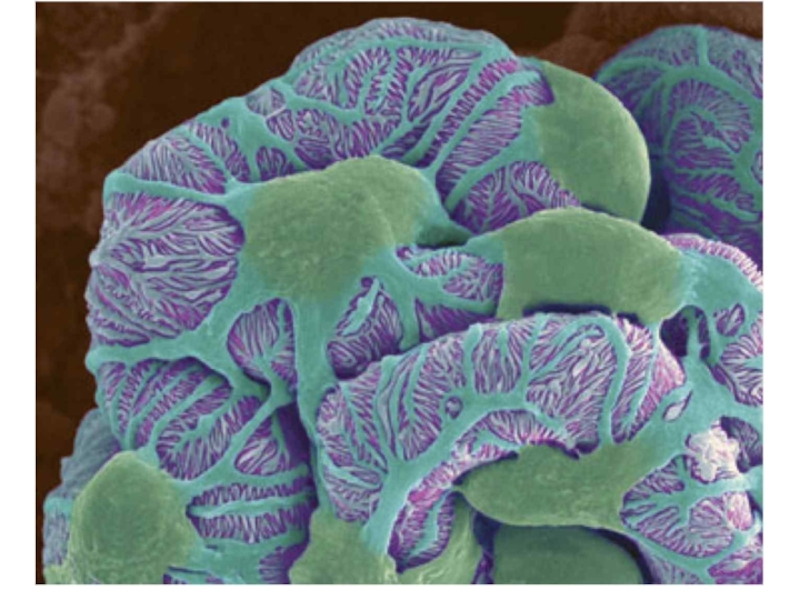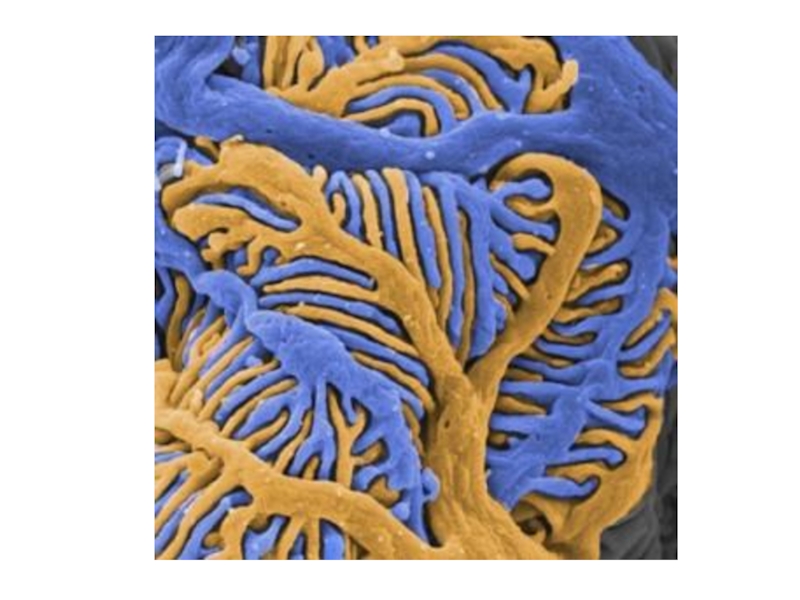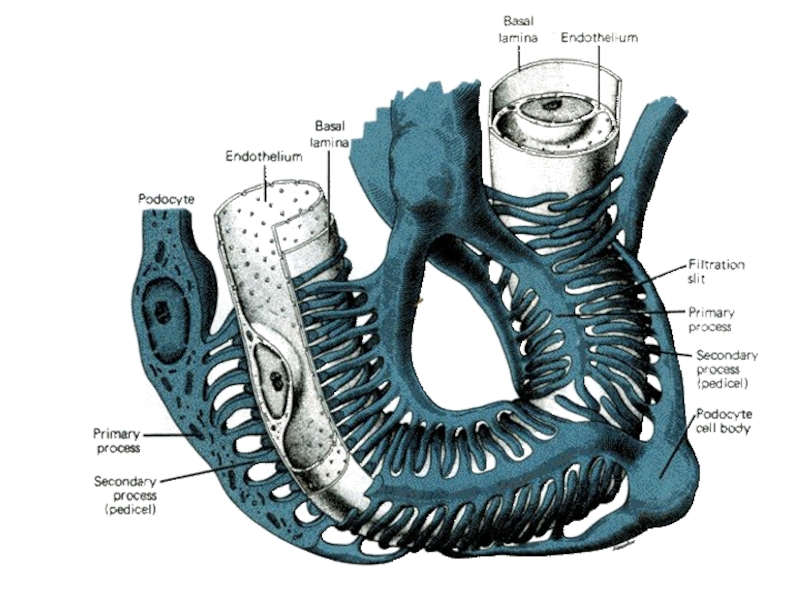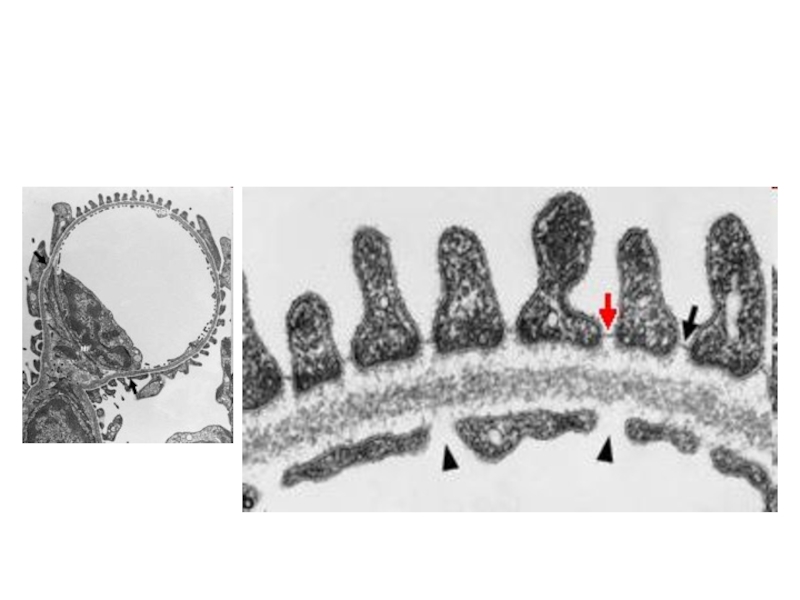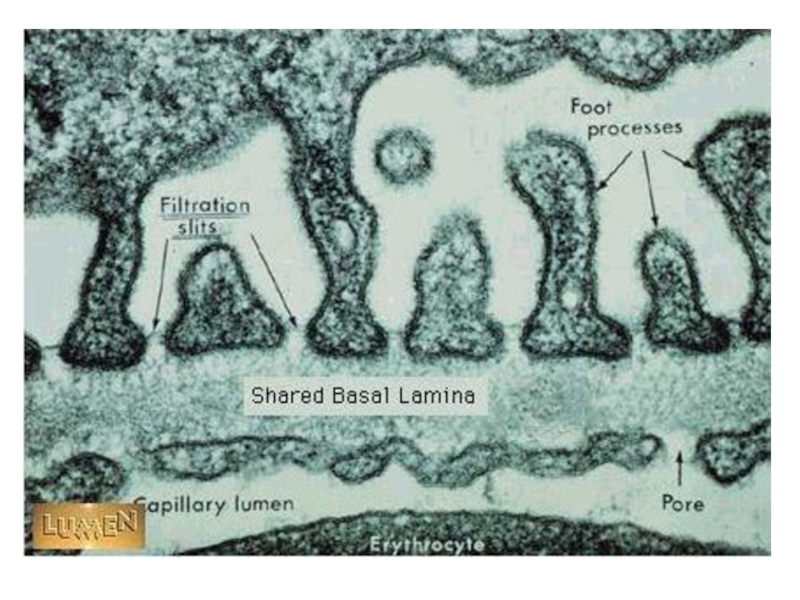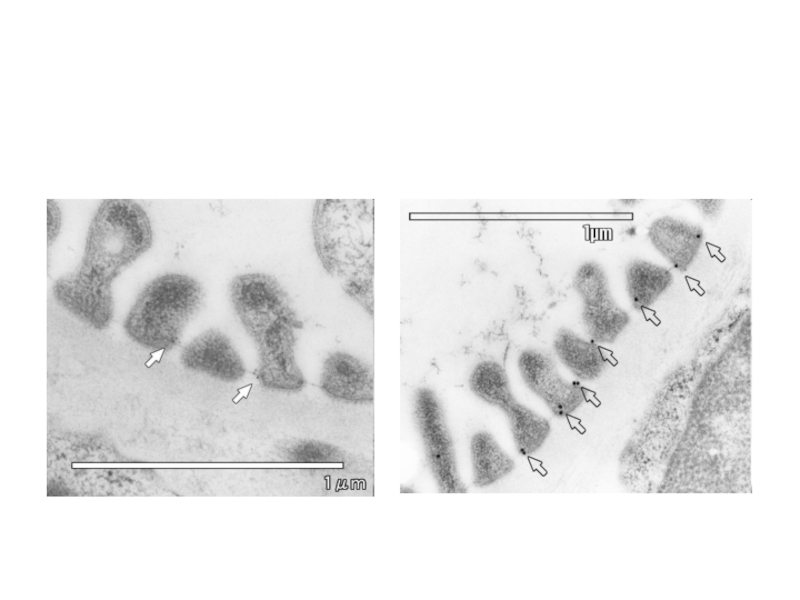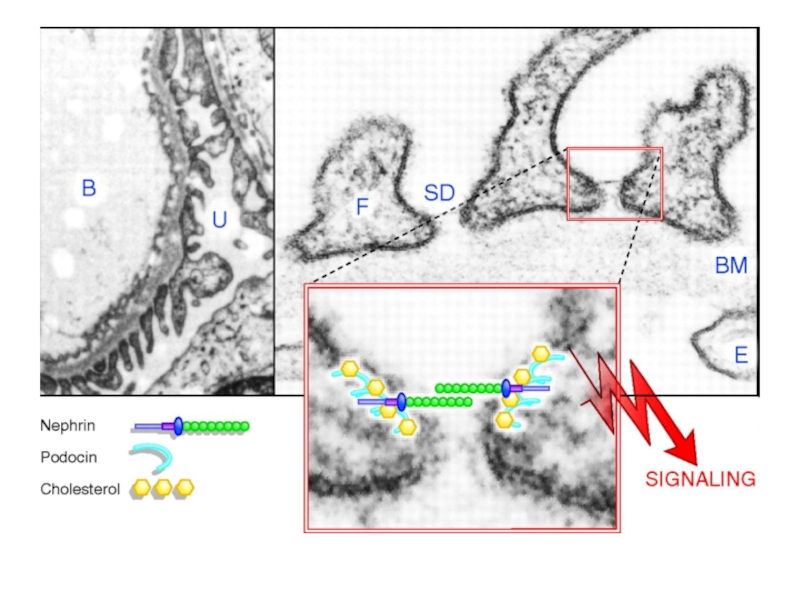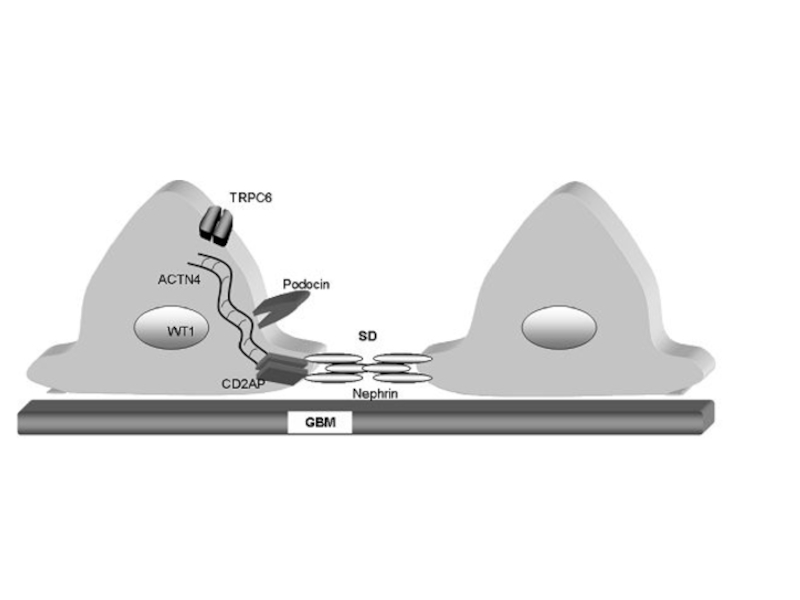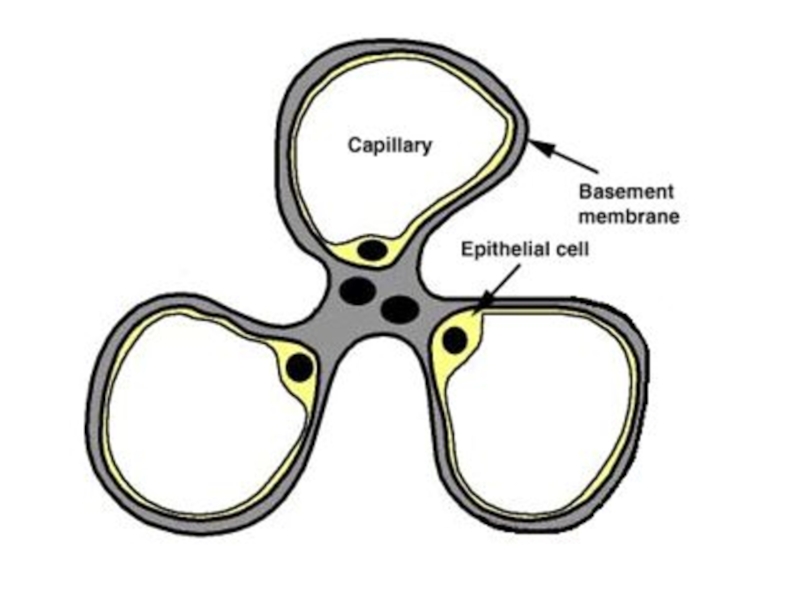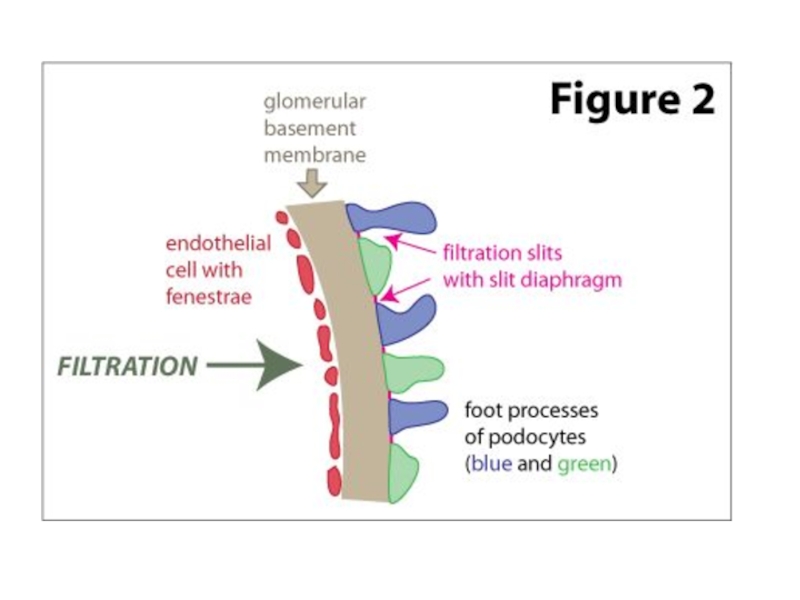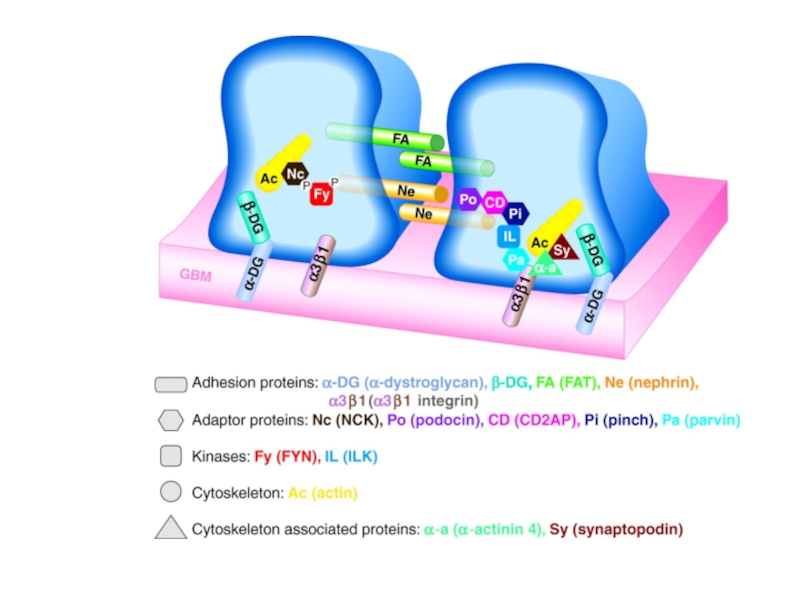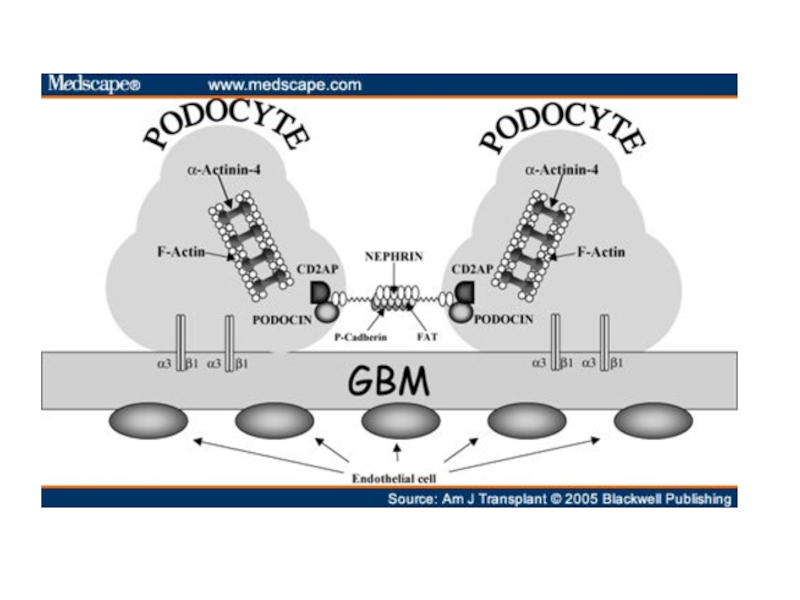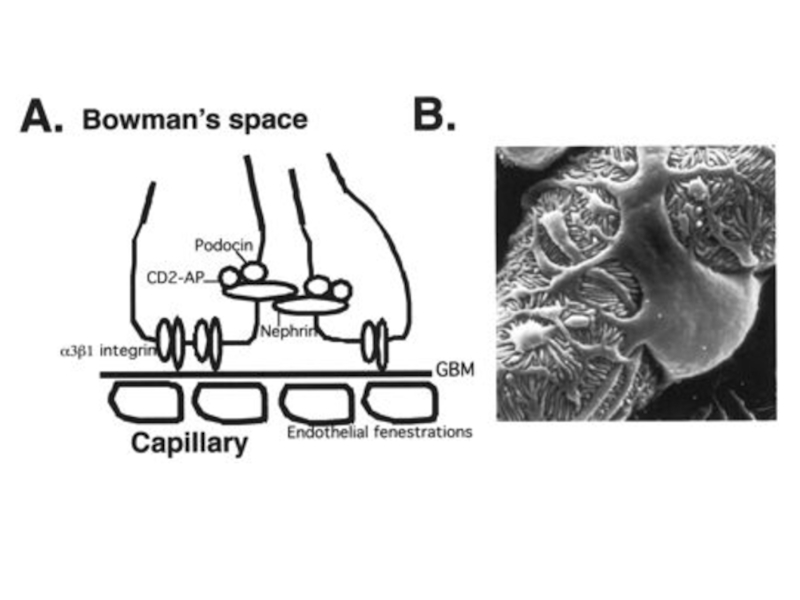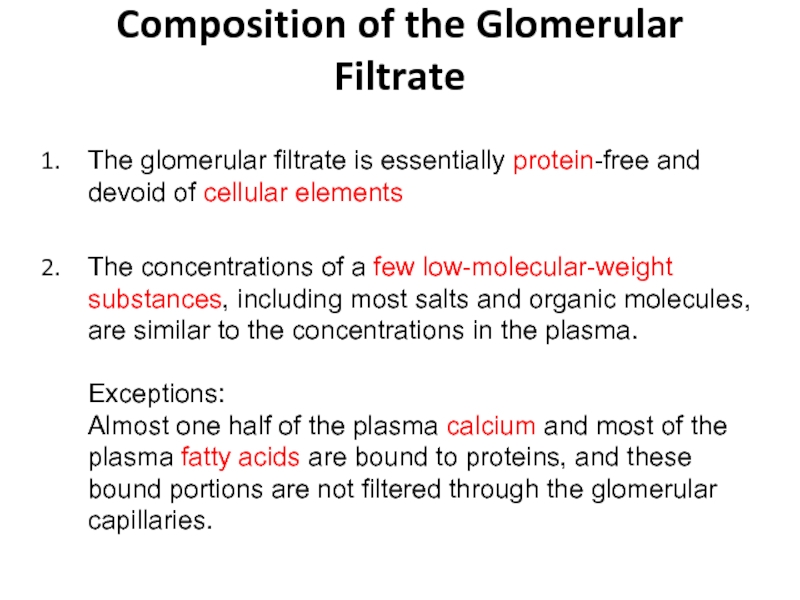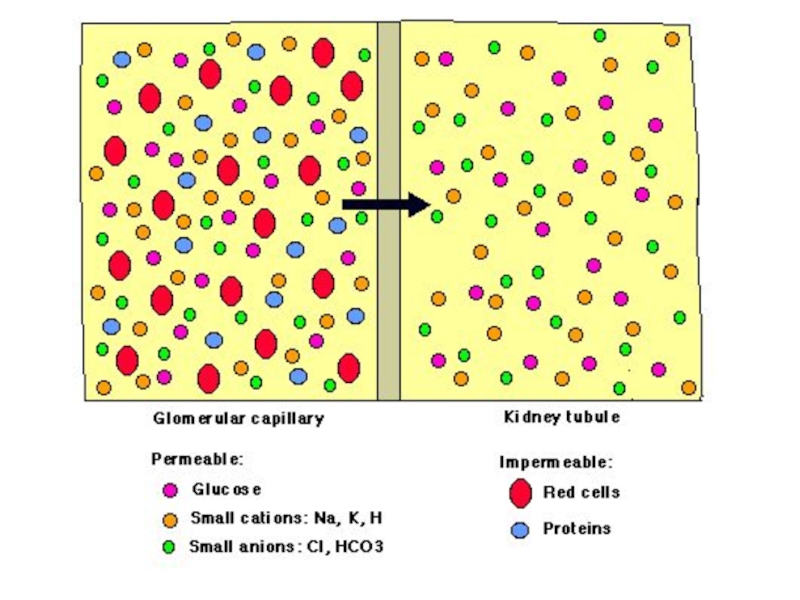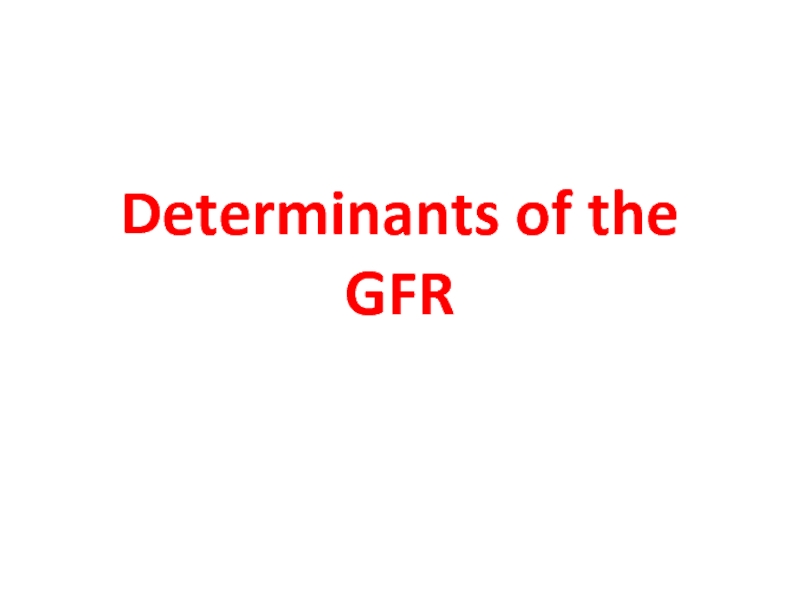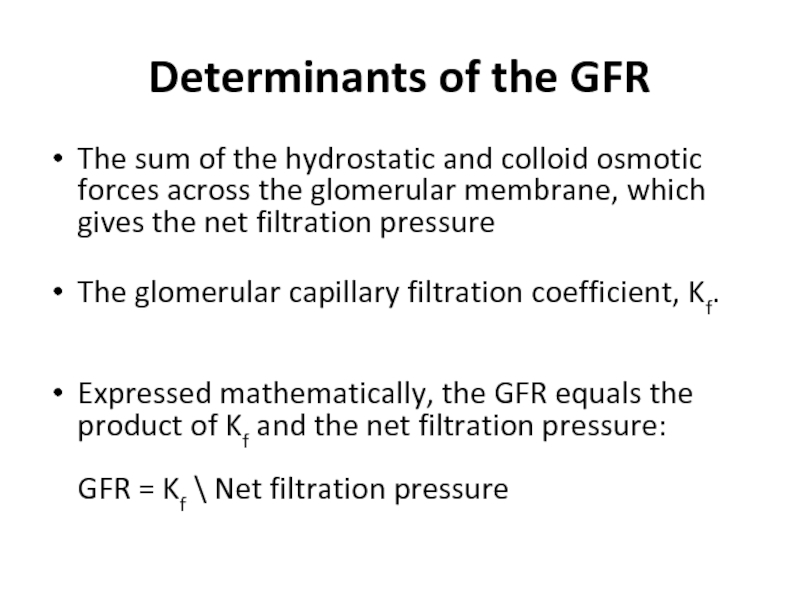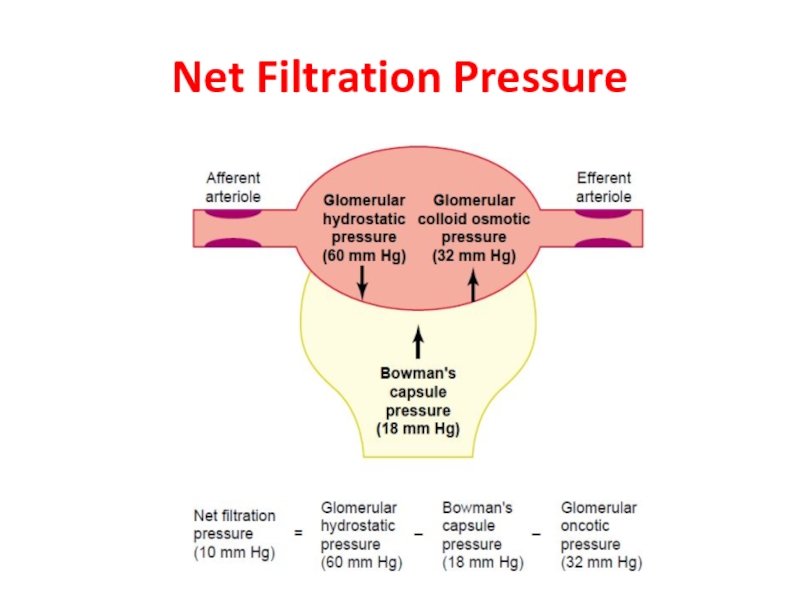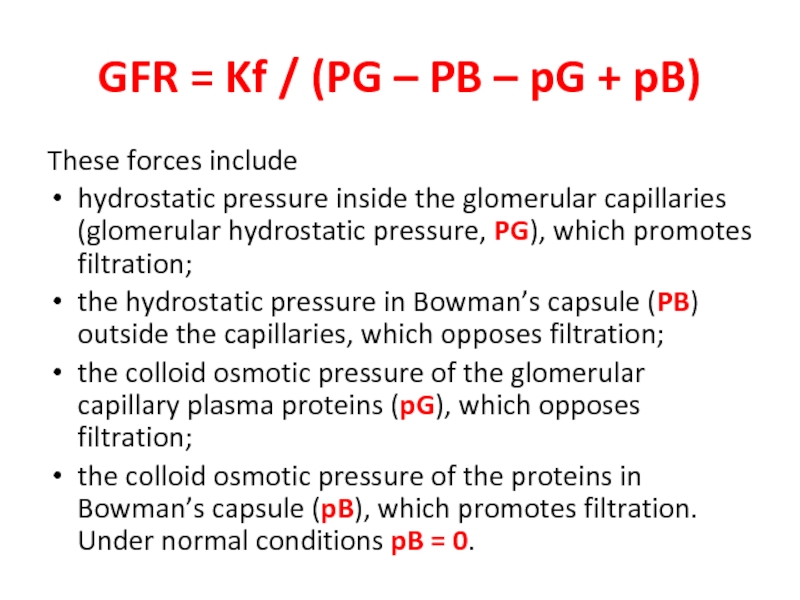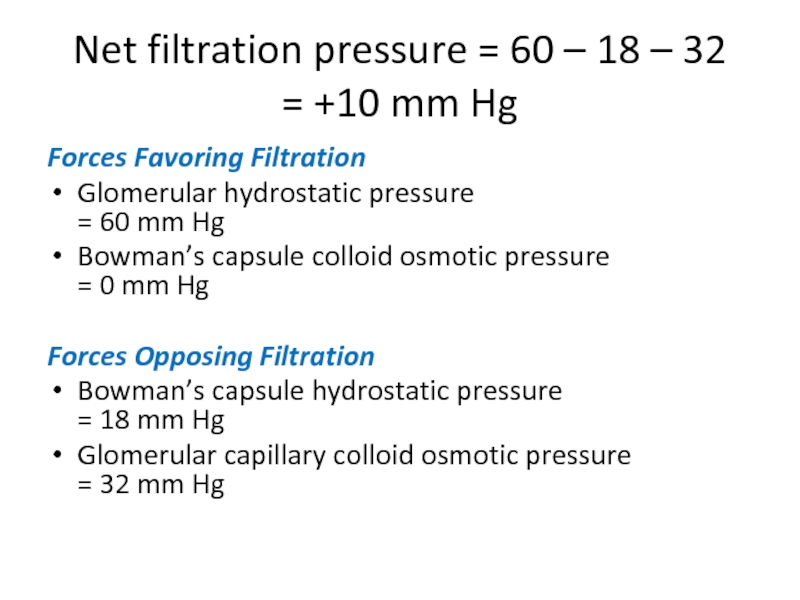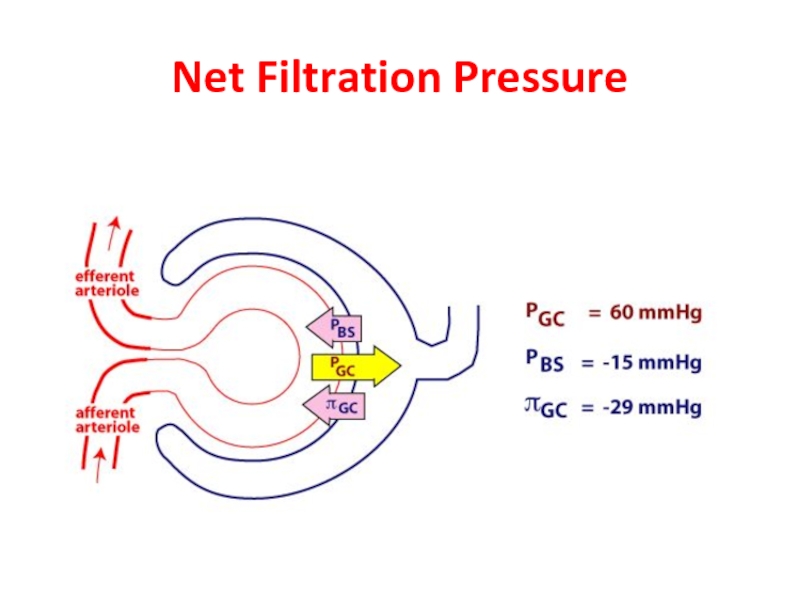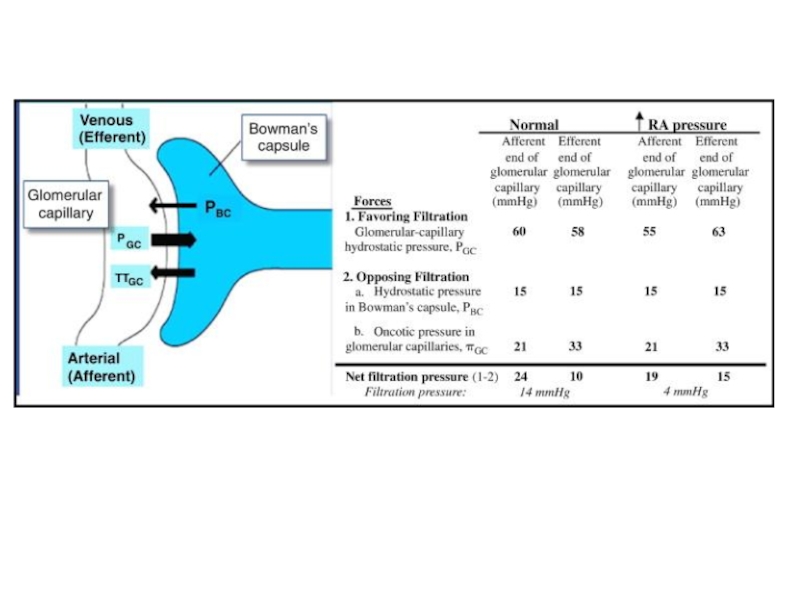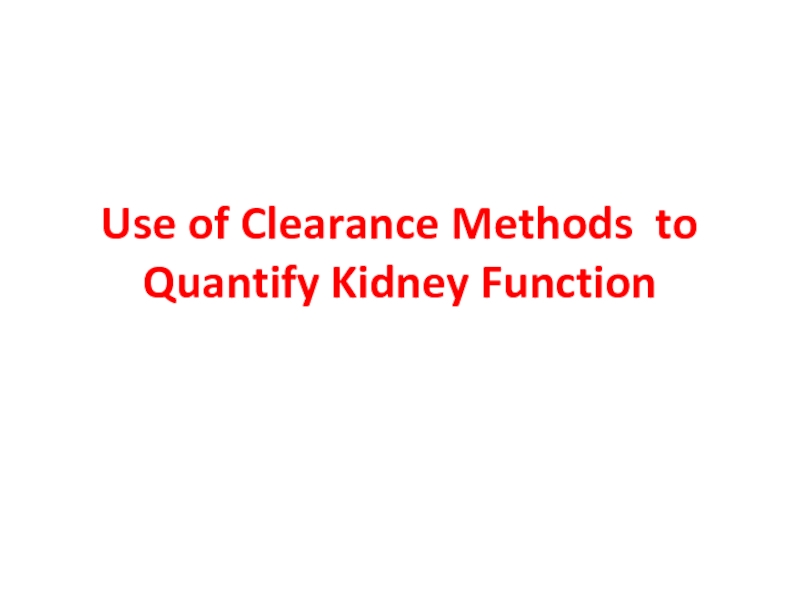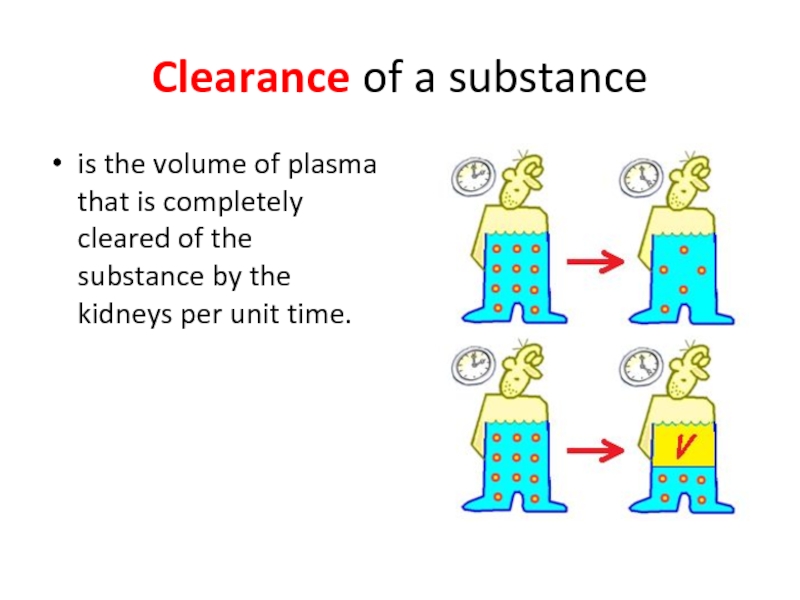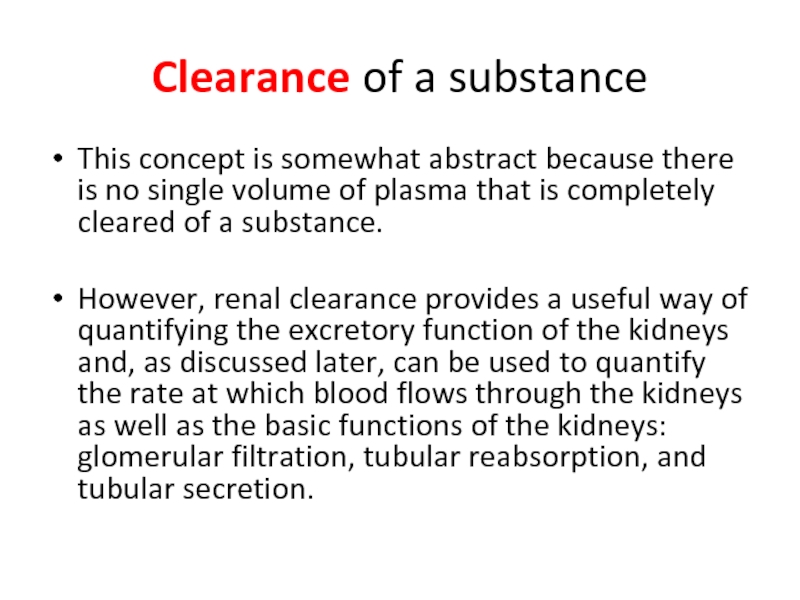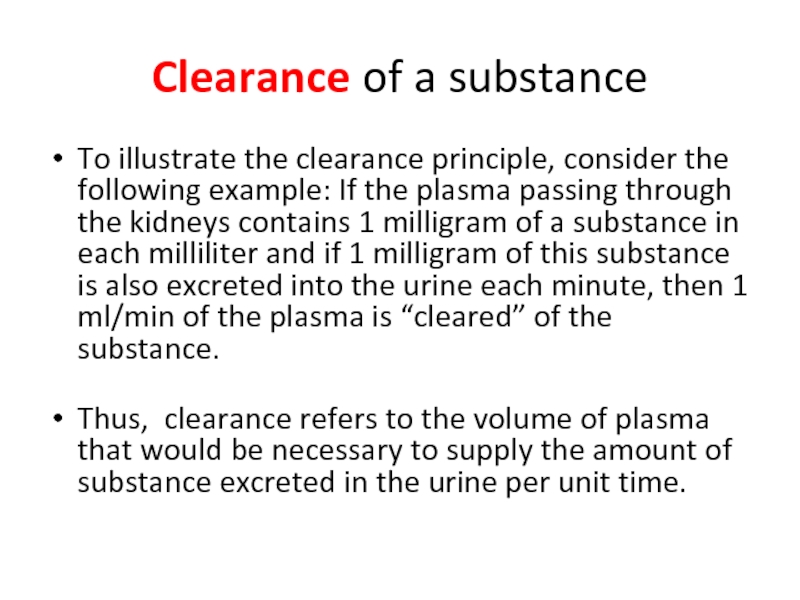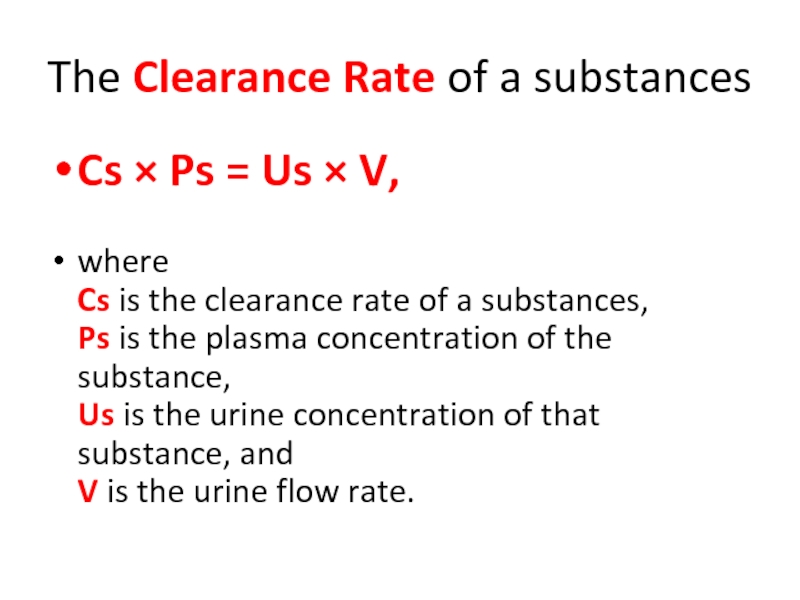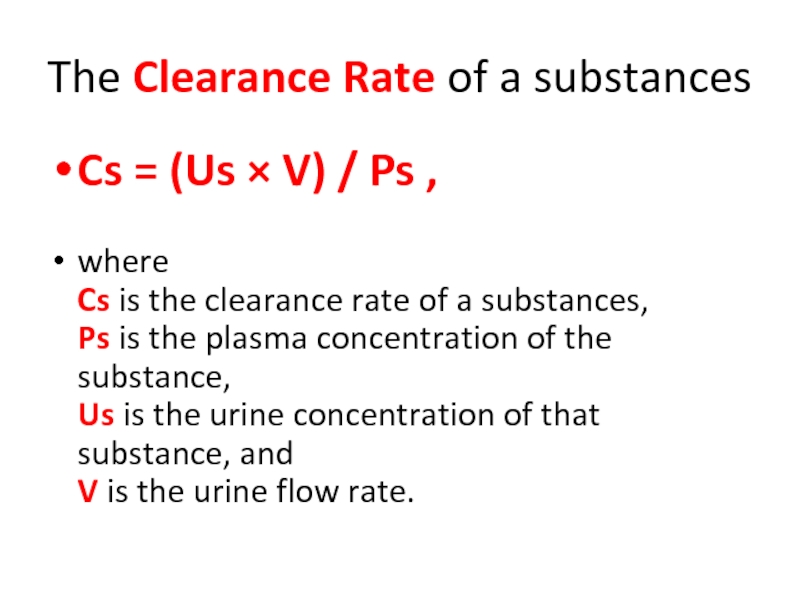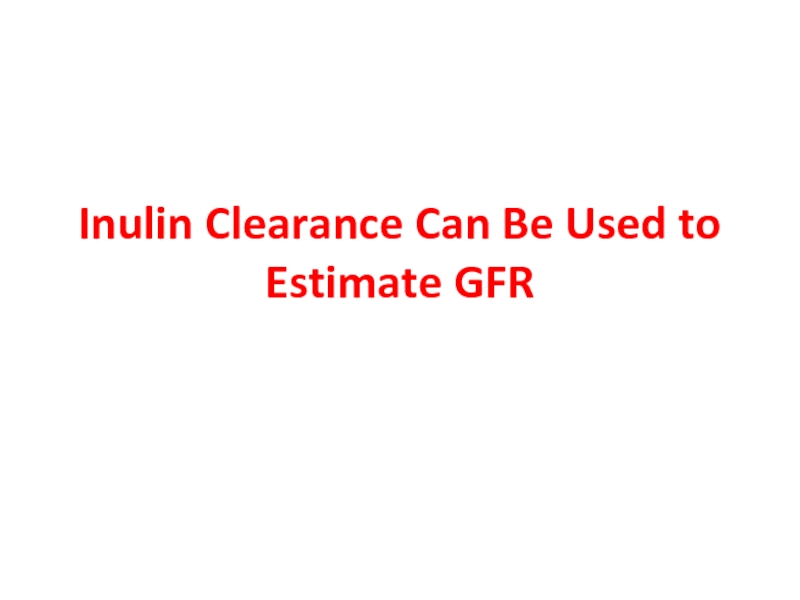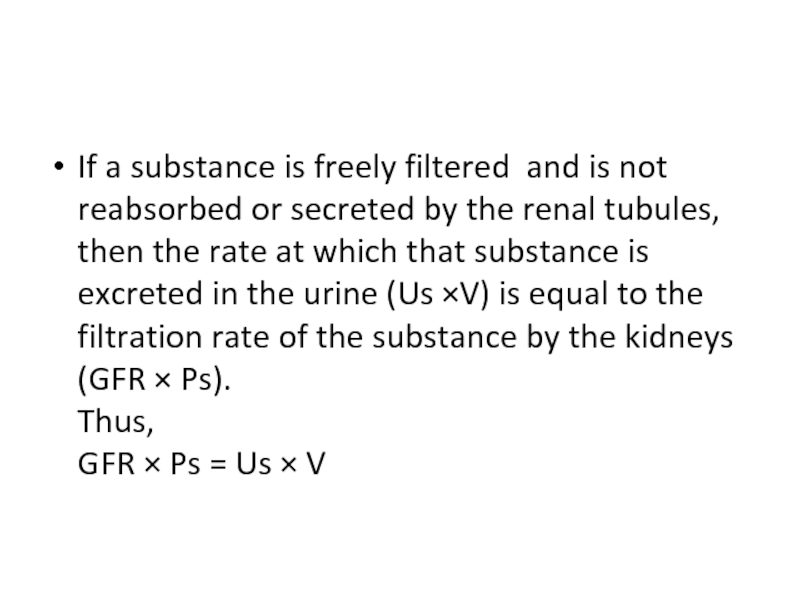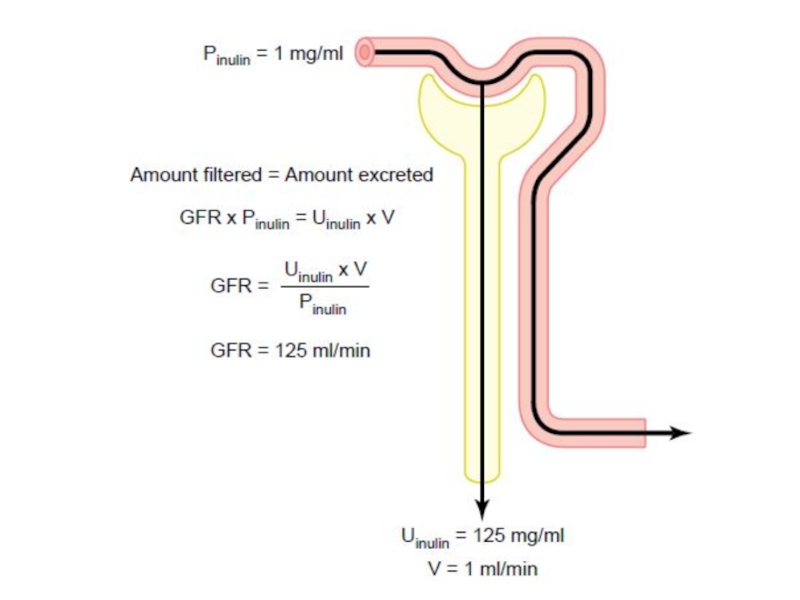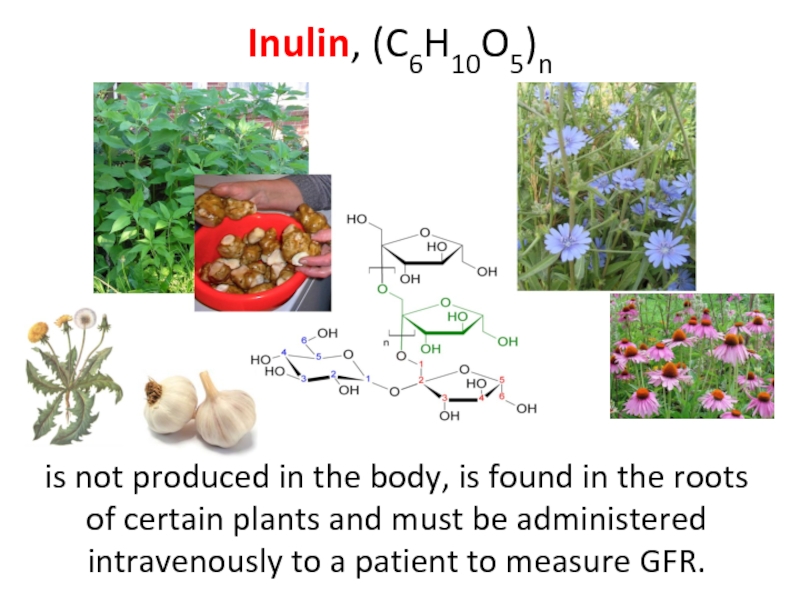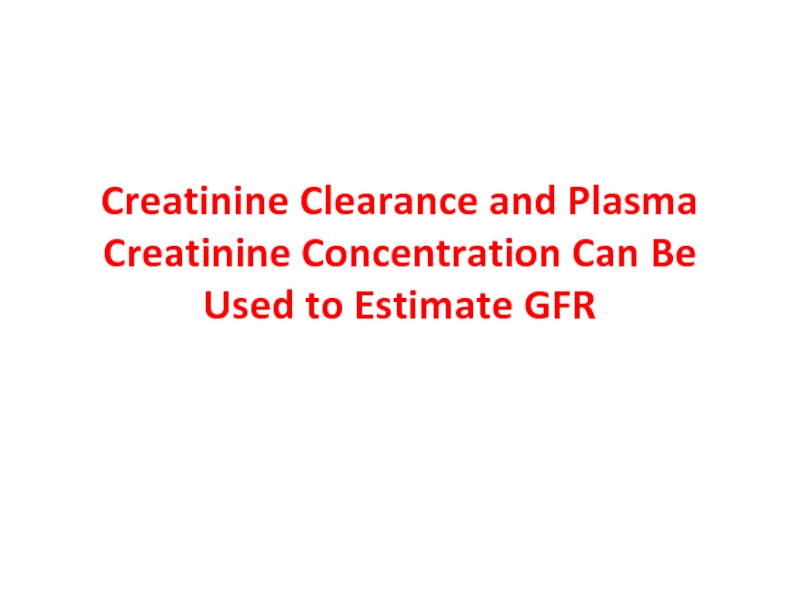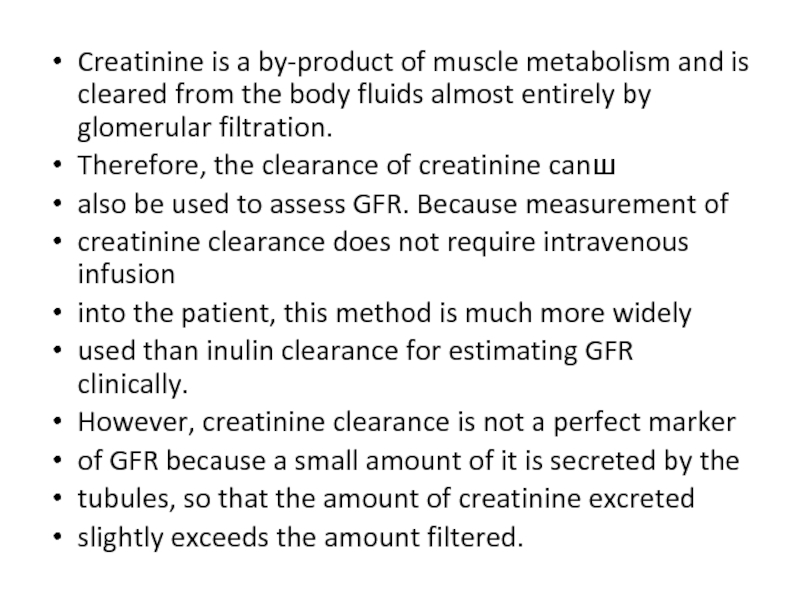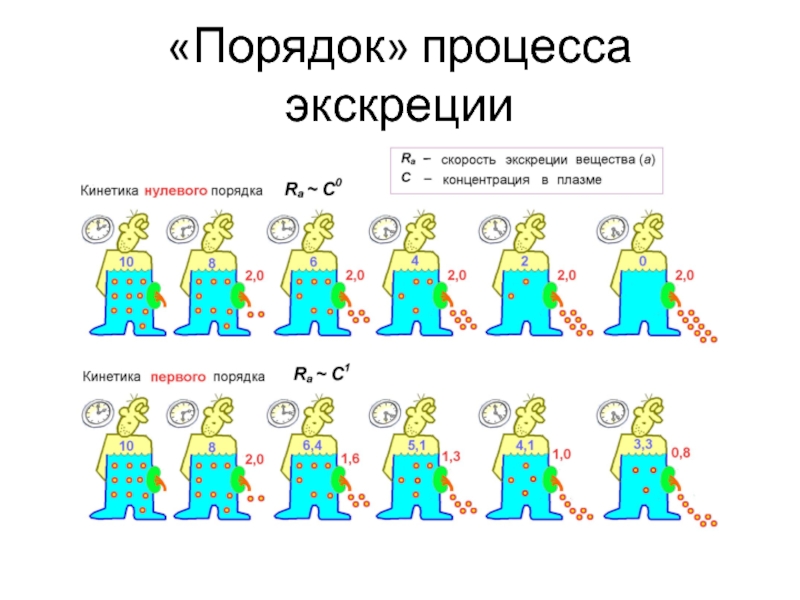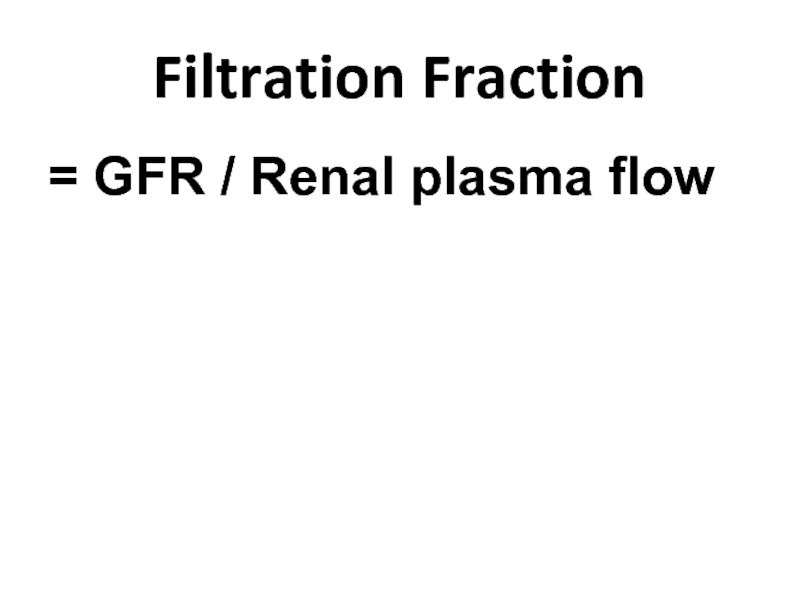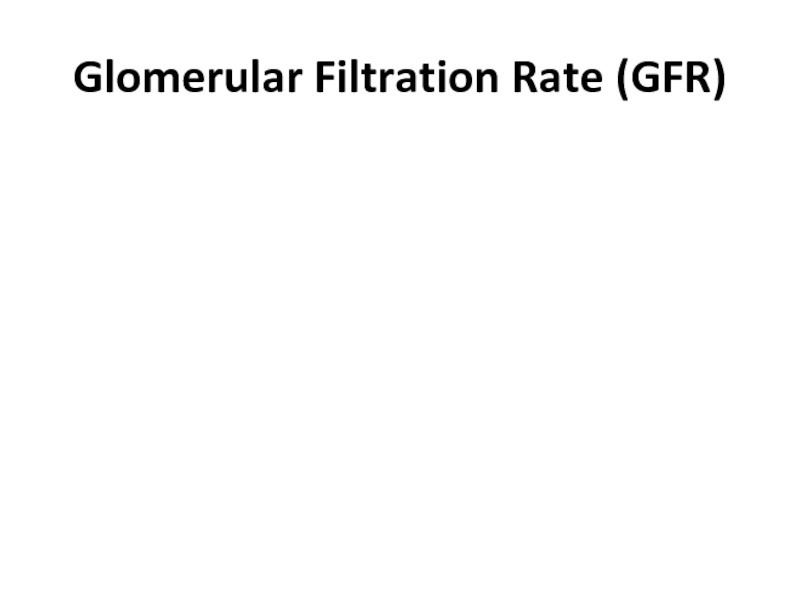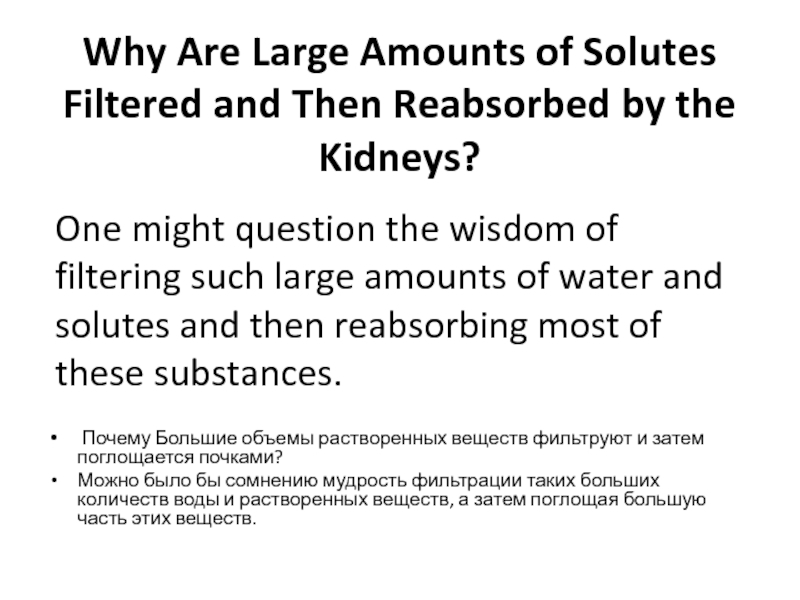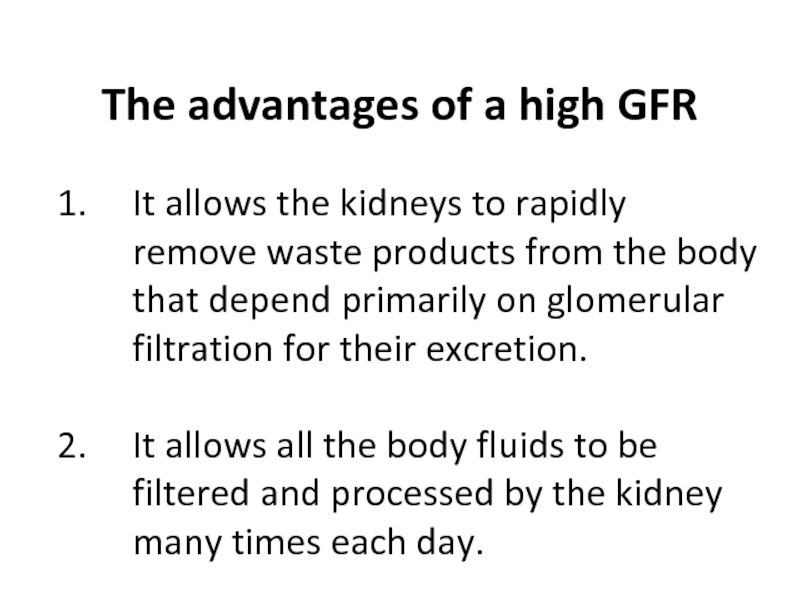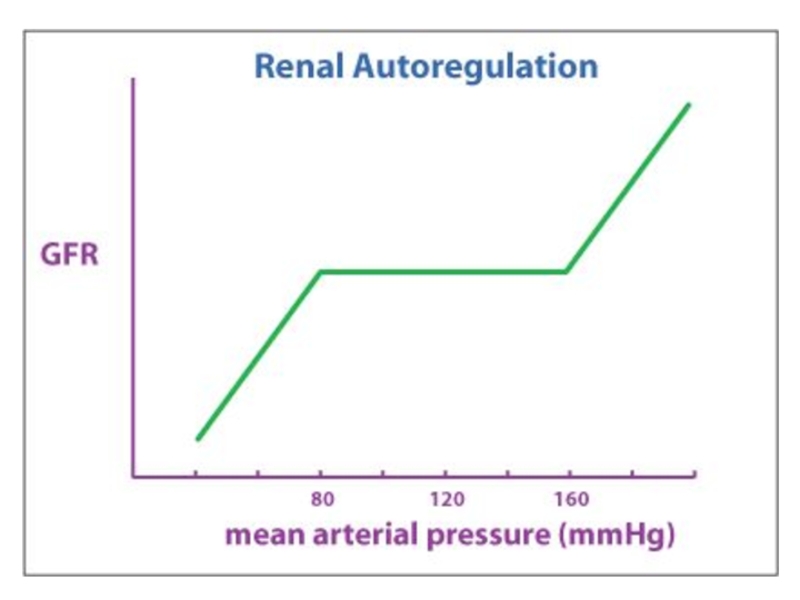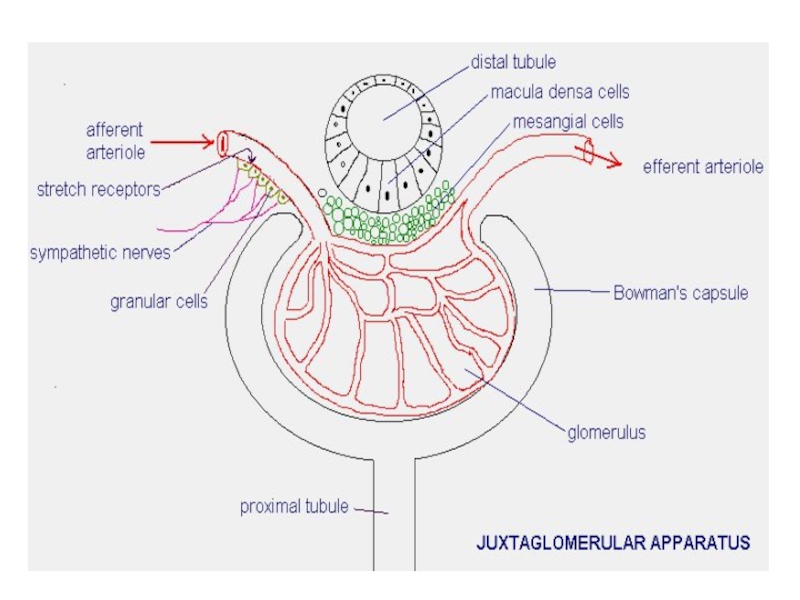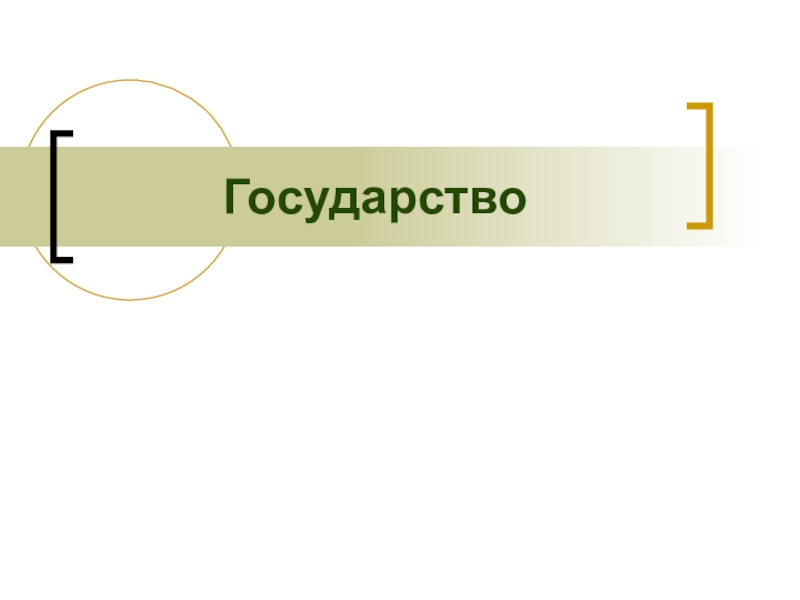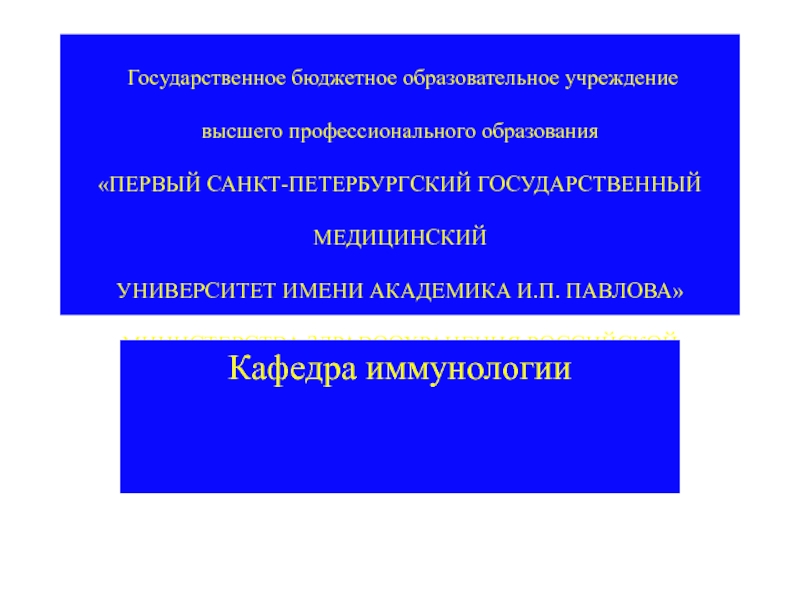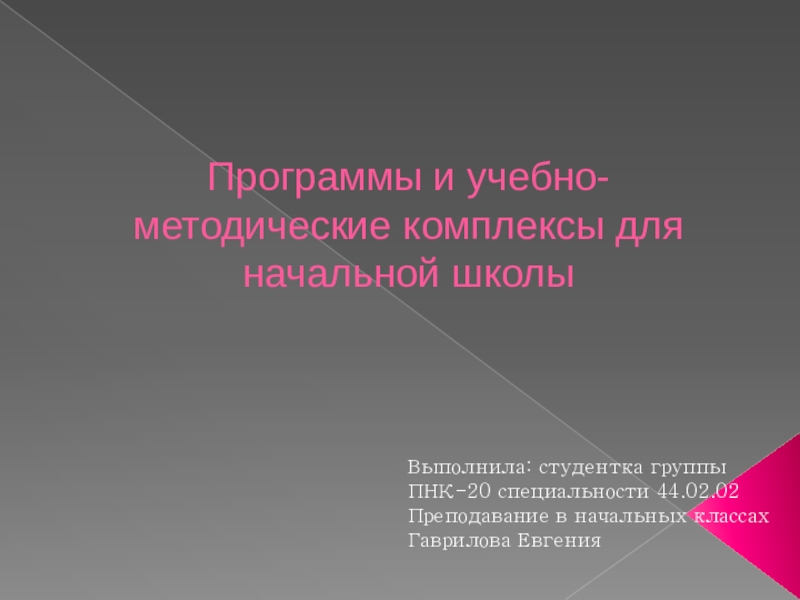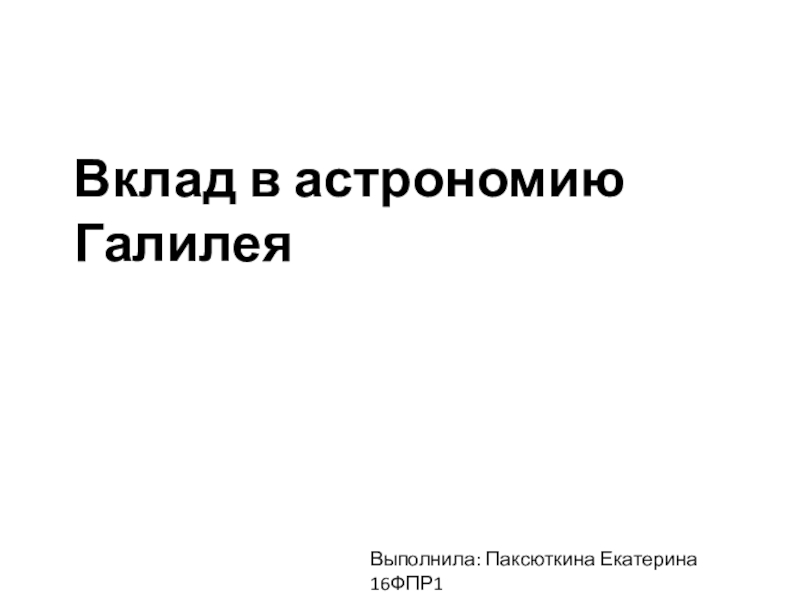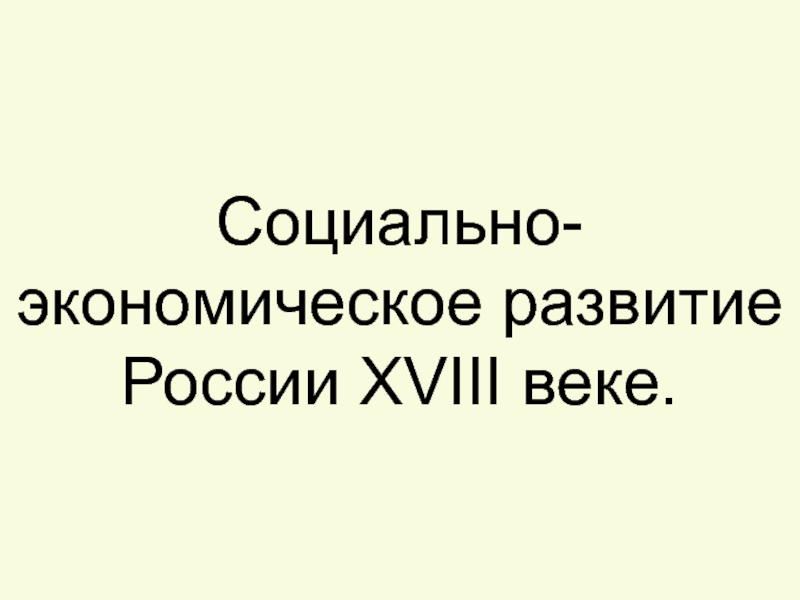Разделы презентаций
- Разное
- Английский язык
- Астрономия
- Алгебра
- Биология
- География
- Геометрия
- Детские презентации
- Информатика
- История
- Литература
- Математика
- Медицина
- Менеджмент
- Музыка
- МХК
- Немецкий язык
- ОБЖ
- Обществознание
- Окружающий мир
- Педагогика
- Русский язык
- Технология
- Физика
- Философия
- Химия
- Шаблоны, картинки для презентаций
- Экология
- Экономика
- Юриспруденция
Urine Formation by the Kidneys:
Содержание
- 1. Urine Formation by the Kidneys:
- 2. The Nephron Is the Functional Unit of the Kidney
- 3. Basic tubular segments of the nephron
- 4. Слайд 4
- 5. Слайд 5
- 6. Слайд 6
- 7. Regional Differences in Nephron Structure: Cortical and Juxtamedullary Nephrons
- 8. Слайд 8
- 9. Urine Formation Results from Glomerular Filtration, Tubular Reabsorption, and Tubular Secretion
- 10. Слайд 10
- 11. Слайд 11
- 12. Слайд 12
- 13. Renal handling of four substances
- 14. Glomerular Filtration — The First Step in Urine Formation
- 15. Glomerular Capillary Membrane
- 16. The Glomerular Capillary Membrane is similar to that
- 17. Glomerular Capillary MembraneFigure 26–10 A, Basic ultrastructure
- 18. Слайд 18
- 19. Слайд 19
- 20. Слайд 20
- 21. Слайд 21
- 22. Слайд 22
- 23. Слайд 23
- 24. Слайд 24
- 25. Слайд 25
- 26. Слайд 26
- 27. Слайд 27
- 28. Слайд 28
- 29. Слайд 29
- 30. Слайд 30
- 31. Слайд 31
- 32. Слайд 32
- 33. Слайд 33
- 34. Слайд 34
- 35. Слайд 35
- 36. Composition of the Glomerular Filtrate The glomerular
- 37. Слайд 37
- 38. Determinants of the GFR
- 39. Determinants of the GFRThe sum of the
- 40. Net Filtration Pressure
- 41. GFR = Kf / (PG – PB
- 42. Net filtration pressure = 60 – 18
- 43. Net Filtration Pressure
- 44. Слайд 44
- 45. Use of Clearance Methods to Quantify Kidney Function
- 46. Clearance of a substance is the volume
- 47. Clearance of a substance This concept is
- 48. Clearance of a substance To illustrate the
- 49. The Clearance Rate of a substancesCs ×
- 50. The Clearance Rate of a substancesCs =
- 51. Inulin Clearance Can Be Used to Estimate GFR
- 52. If a substance is freely filtered and
- 53. Слайд 53
- 54. Inulin, (C6H10O5)nis not produced in the body,
- 55. Creatinine Clearance and Plasma Creatinine Concentration Can Be Used to Estimate GFR
- 56. Creatinine is a by-product of muscle metabolism
- 57. «Порядок» процесса экскреции
- 58. Filtration Fraction = GFR / Renal plasma flow
- 59. Glomerular Filtration Rate (GFR)
- 60. Why Are Large Amounts of Solutes Filtered
- 61. The advantages of a high GFRIt allows
- 62. Слайд 62
- 63. Слайд 63
- 64. Слайд 64
- 65. Скачать презентанцию
The Nephron Is the Functional Unit of the Kidney
Слайды и текст этой презентации
Слайд 1Urine Formation by the Kidneys:
Glomerular Filtration
II. Tubular Processing of the
Glomerular Filtrate
Слайд 9Urine Formation
Results from
Glomerular Filtration,
Tubular Reabsorption, and
Tubular Secretion
Слайд 16The Glomerular Capillary Membrane
is similar to that of other capillaries,
except that it has three (instead of the usual two)
major layers: (1) the endothelium of the capillary, (2) a basement membrane, and (3) a layer of epithelial cells (podocytes) surrounding the outer surface of the capillary basement membraneСлайд 17Glomerular Capillary Membrane
Figure 26–10
A, Basic ultrastructure of the glomerular capillaries.
B,
Cross section of the glomerular capillary membrane and its major
components: capillary endothelium, basement membrane, and epithelium (podocytes).Слайд 36Composition of the Glomerular Filtrate
The glomerular filtrate is essentially protein-free
and devoid of cellular elements
The concentrations of a few low-molecular-weight
substances, including most salts and organic molecules, are similar to the concentrations in the plasma.
Exceptions:
Almost one half of the plasma calcium and most of the plasma fatty acids are bound to proteins, and these bound portions are not filtered through the glomerular capillaries.Слайд 39Determinants of the GFR
The sum of the hydrostatic and colloid
osmotic forces across the glomerular membrane, which gives the net
filtration pressureThe glomerular capillary filtration coefficient, Kf.
Expressed mathematically, the GFR equals the product of Kf and the net filtration pressure: GFR = Kf \ Net filtration pressure
Слайд 41GFR = Kf / (PG – PB – pG +
pB)
These forces include
hydrostatic pressure inside the glomerular capillaries (glomerular
hydrostatic pressure, PG), which promotes filtration;the hydrostatic pressure in Bowman’s capsule (PB) outside the capillaries, which opposes filtration;
the colloid osmotic pressure of the glomerular capillary plasma proteins (pG), which opposes filtration;
the colloid osmotic pressure of the proteins in Bowman’s capsule (pB), which promotes filtration. Under normal conditions pB = 0.
Слайд 42Net filtration pressure = 60 – 18 – 32 =
+10 mm Hg
Forces Favoring Filtration
Glomerular hydrostatic pressure
= 60 mm
HgBowman’s capsule colloid osmotic pressure = 0 mm Hg
Forces Opposing Filtration
Bowman’s capsule hydrostatic pressure = 18 mm Hg
Glomerular capillary colloid osmotic pressure = 32 mm Hg
Слайд 46Clearance of a substance
is the volume of plasma that
is completely cleared of the substance by the kidneys per
unit time.Слайд 47Clearance of a substance
This concept is somewhat abstract because
there is no single volume of plasma that is completely
cleared of a substance.However, renal clearance provides a useful way of quantifying the excretory function of the kidneys and, as discussed later, can be used to quantify the rate at which blood flows through the kidneys as well as the basic functions of the kidneys: glomerular filtration, tubular reabsorption, and tubular secretion.
Слайд 48Clearance of a substance
To illustrate the clearance principle, consider
the following example: If the plasma passing through the kidneys
contains 1 milligram of a substance in each milliliter and if 1 milligram of this substance is also excreted into the urine each minute, then 1 ml/min of the plasma is “cleared” of the substance.Thus, clearance refers to the volume of plasma that would be necessary to supply the amount of substance excreted in the urine per unit time.
Слайд 49The Clearance Rate of a substances
Cs × Ps = Us
× V,
where
Cs is the clearance rate of a substances,
Ps is the plasma concentration of the substance,
Us is the urine concentration of that substance, and
V is the urine flow rate. Слайд 50The Clearance Rate of a substances
Cs = (Us × V)
/ Ps ,
where
Cs is the clearance rate of a
substances,
Ps is the plasma concentration of the substance,
Us is the urine concentration of that substance, and
V is the urine flow rate. Слайд 52If a substance is freely filtered and is not reabsorbed
or secreted by the renal tubules, then the rate at
which that substance is excreted in the urine (Us ×V) is equal to the filtration rate of the substance by the kidneys (GFR × Ps). Thus, GFR × Ps = Us × VСлайд 54Inulin, (C6H10O5)n
is not produced in the body, is found in
the roots of certain plants and must be administered intravenously
to a patient to measure GFR.Слайд 56Creatinine is a by-product of muscle metabolism and is cleared
from the body fluids almost entirely by glomerular filtration.
Therefore,
the clearance of creatinine canшalso be used to assess GFR. Because measurement of
creatinine clearance does not require intravenous infusion
into the patient, this method is much more widely
used than inulin clearance for estimating GFR clinically.
However, creatinine clearance is not a perfect marker
of GFR because a small amount of it is secreted by the
tubules, so that the amount of creatinine excreted
slightly exceeds the amount filtered.
Слайд 60Why Are Large Amounts of Solutes Filtered and Then Reabsorbed
by the Kidneys?
Почему Большие объемы растворенных веществ фильтруют и
затем поглощается почками?Можно было бы сомнению мудрость фильтрации таких больших количеств воды и растворенных веществ, а затем поглощая большую часть этих веществ.
One might question the wisdom of filtering such large amounts of water and solutes and then reabsorbing most of these substances.
Слайд 61The advantages of a high GFR
It allows the kidneys to
rapidly remove waste products from the body that depend primarily
on glomerular filtration for their excretion.It allows all the body fluids to be filtered and processed by the kidney many times each day.
